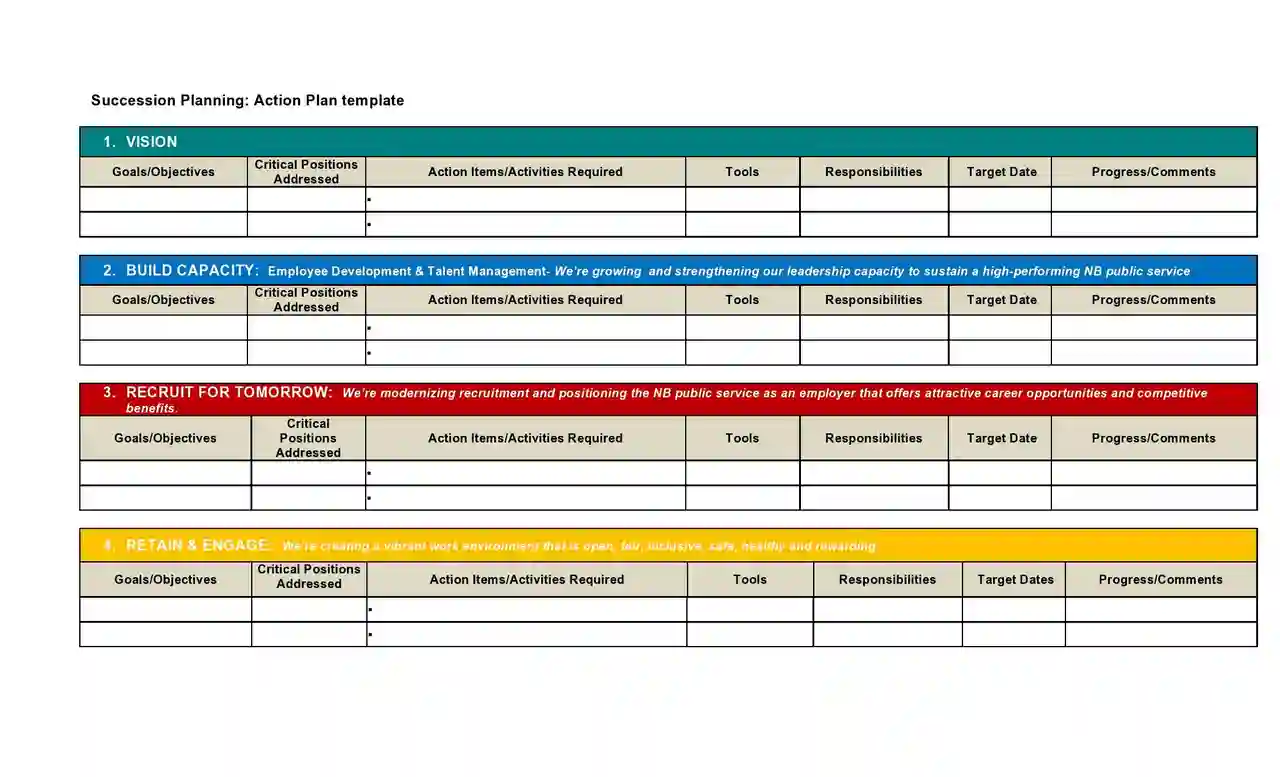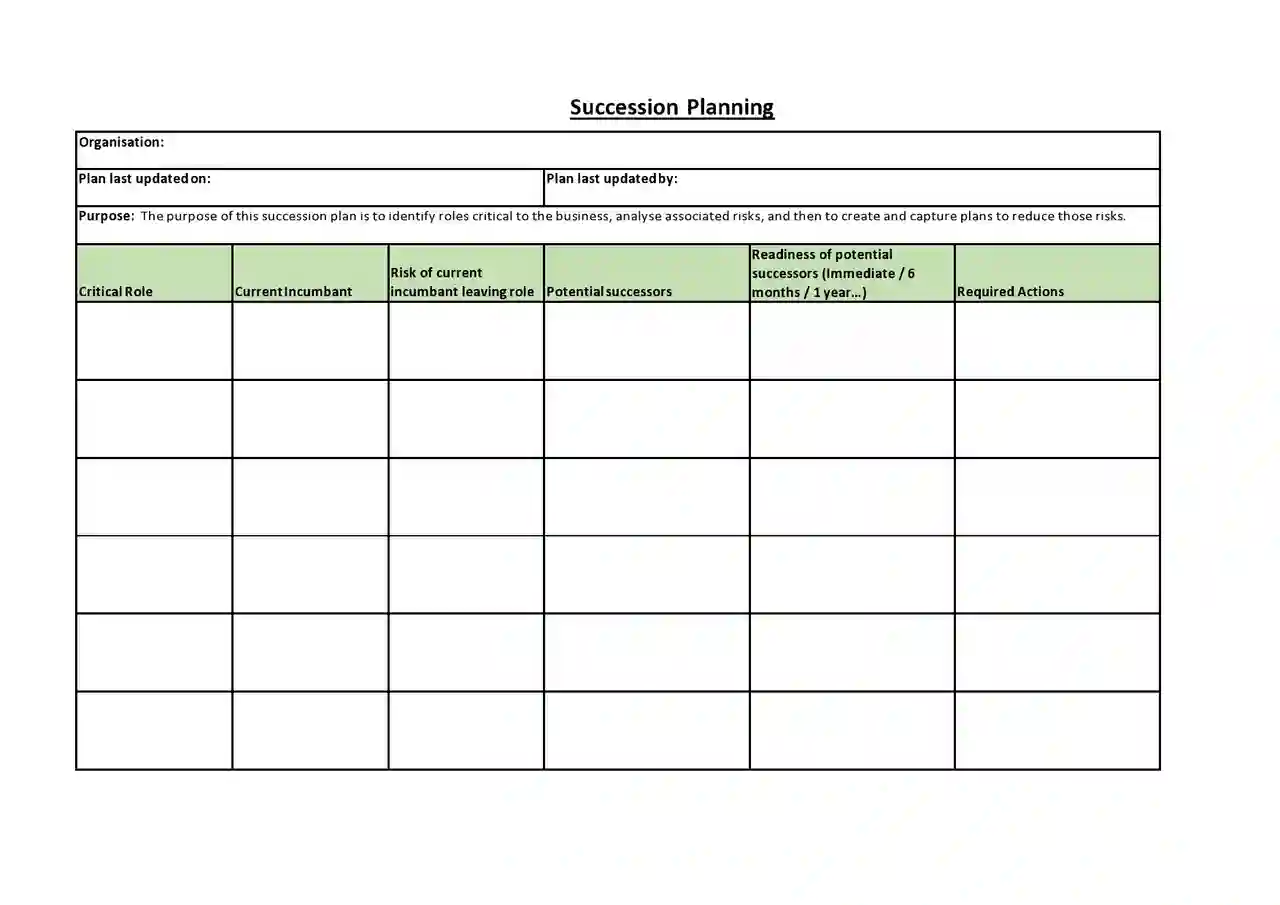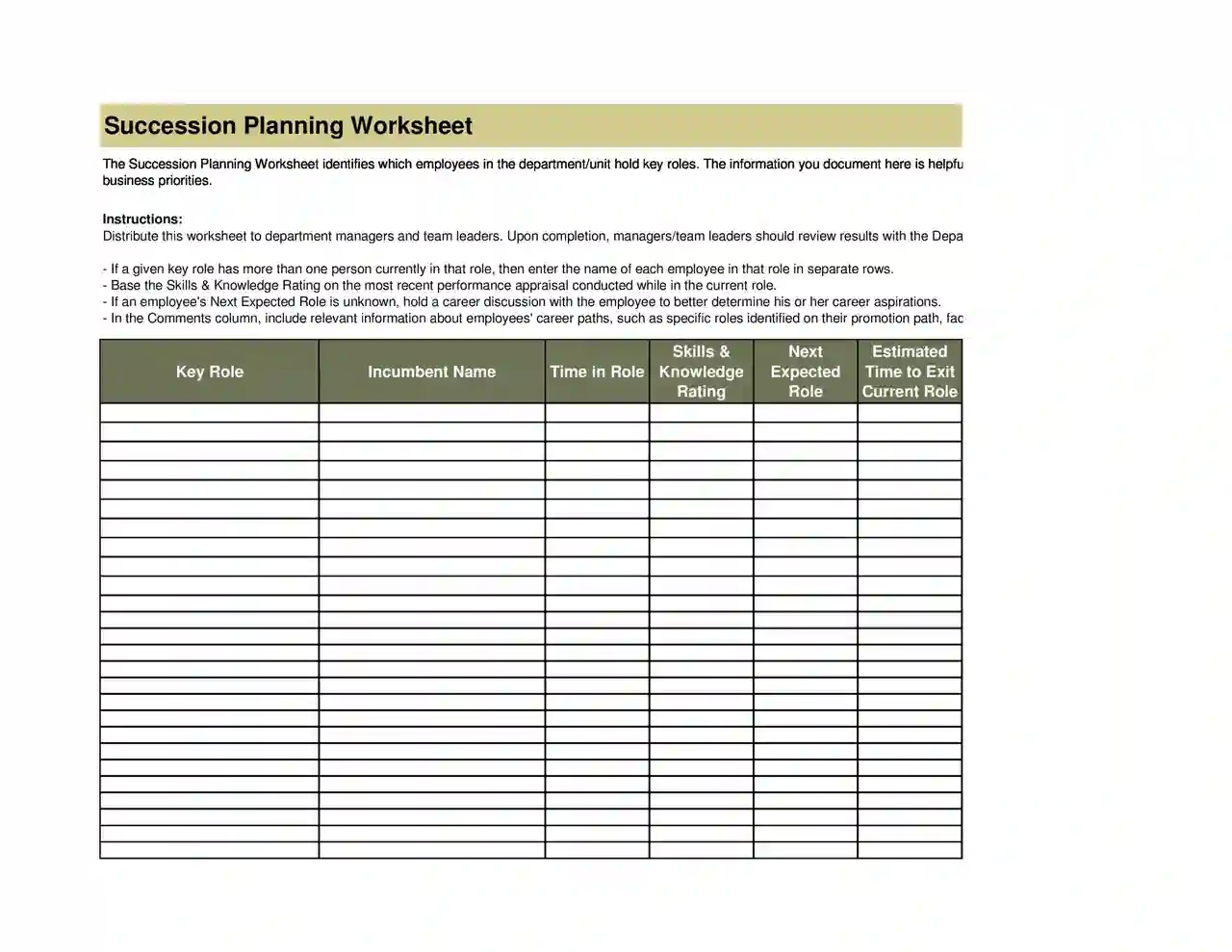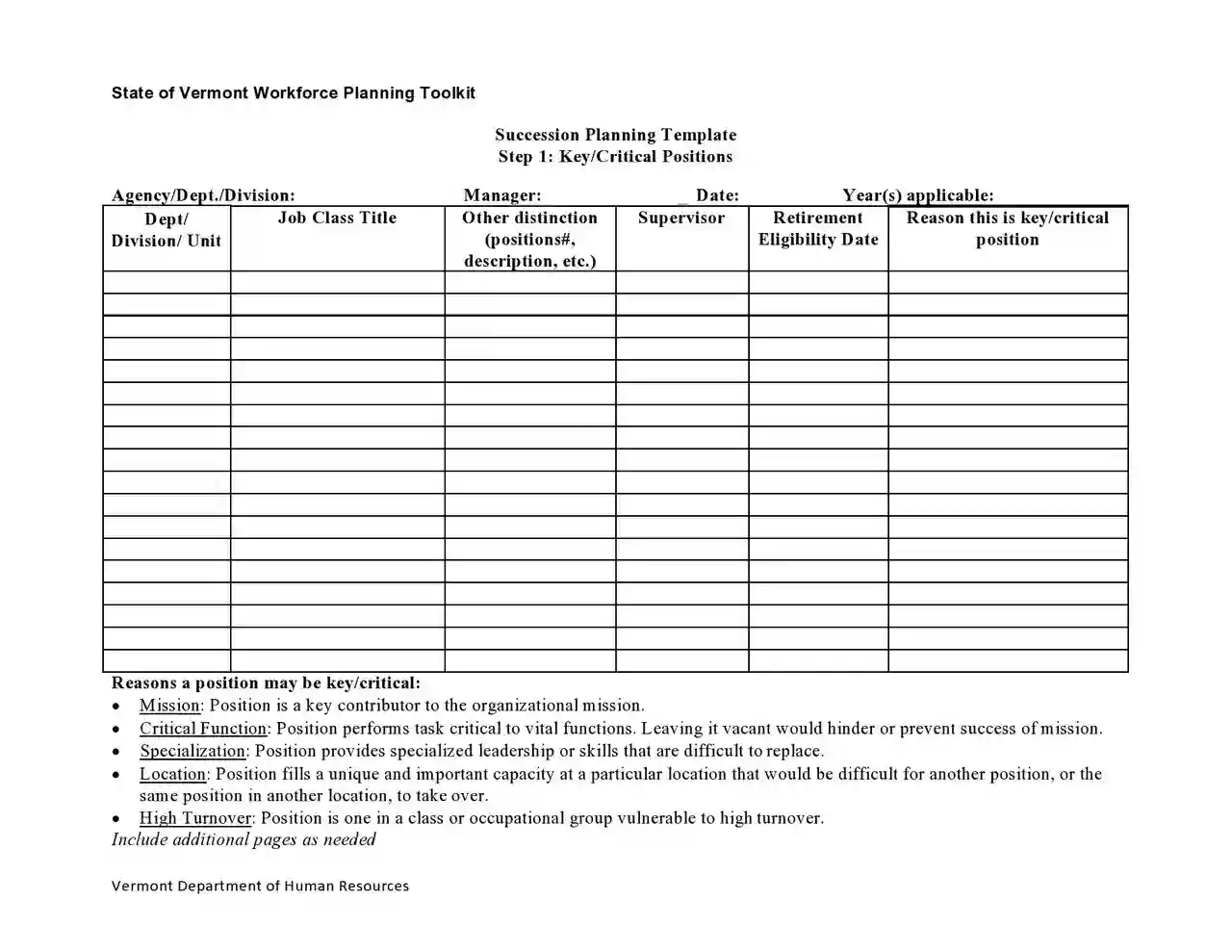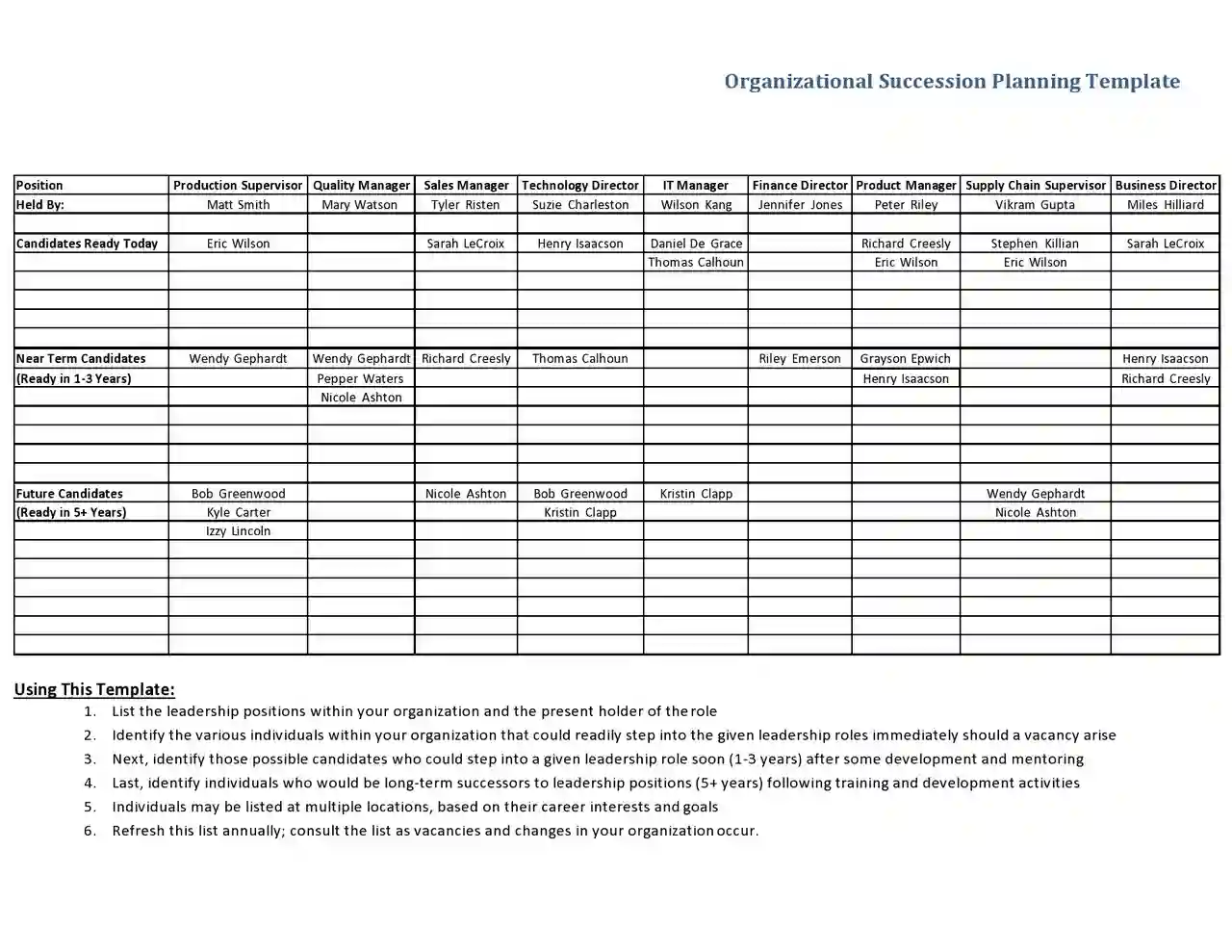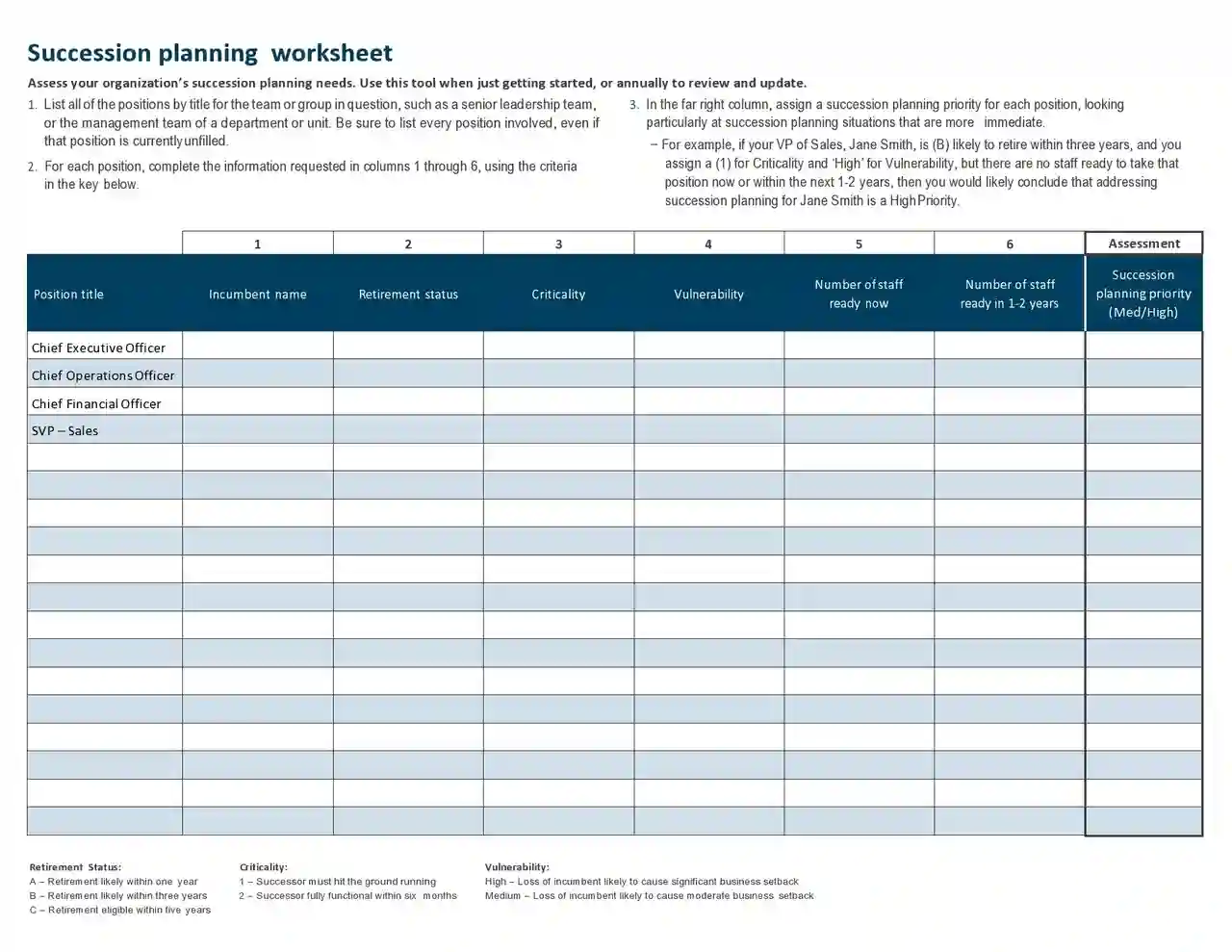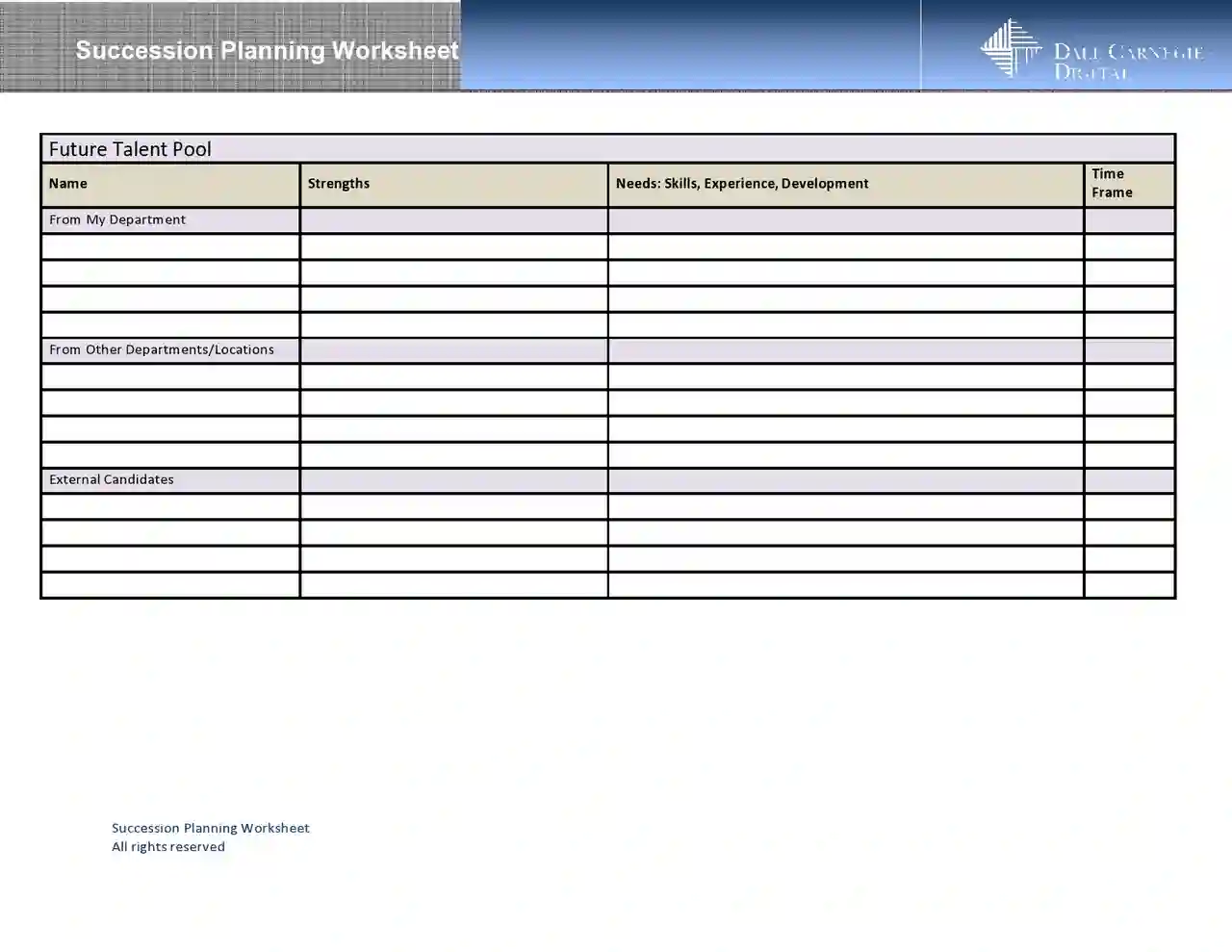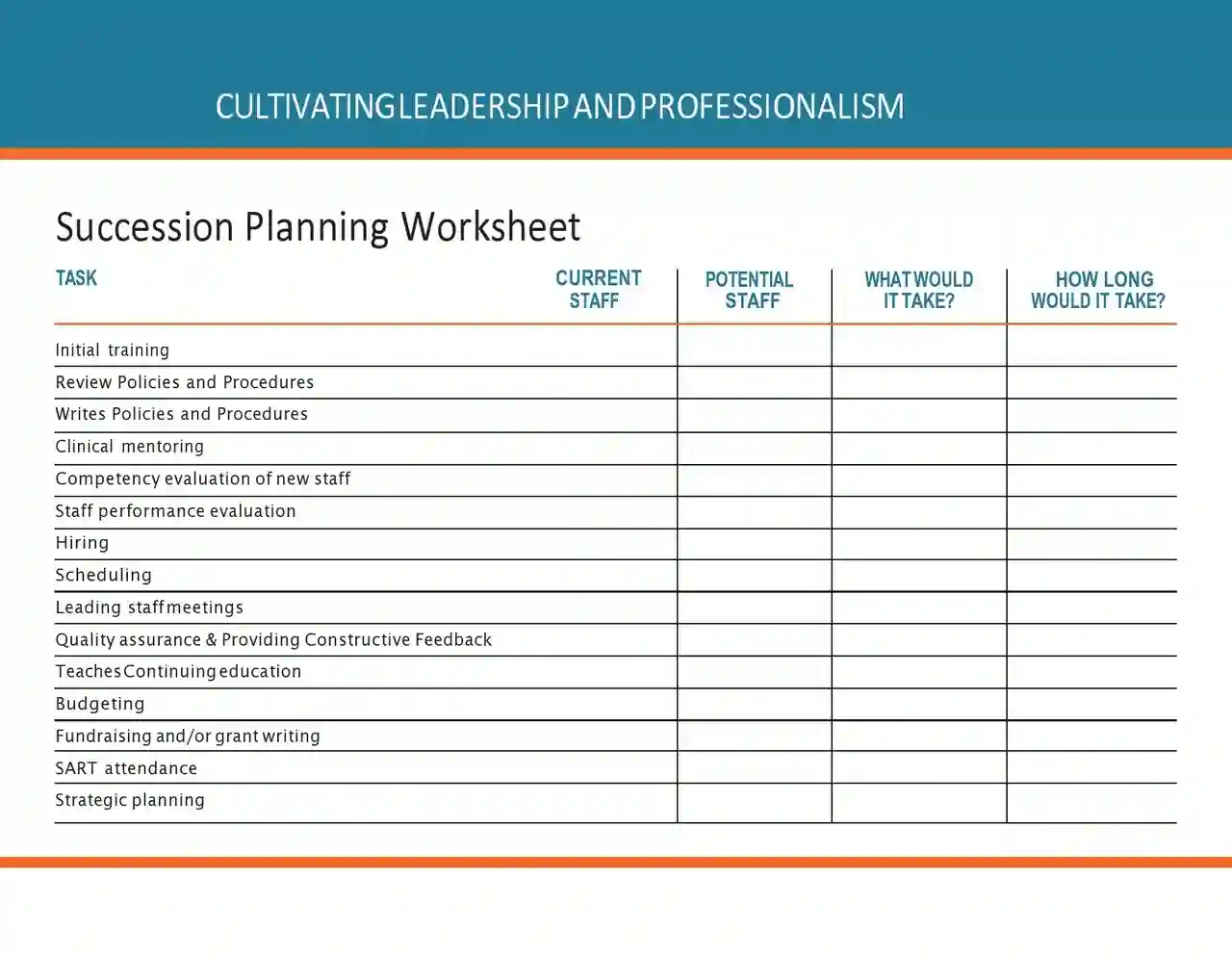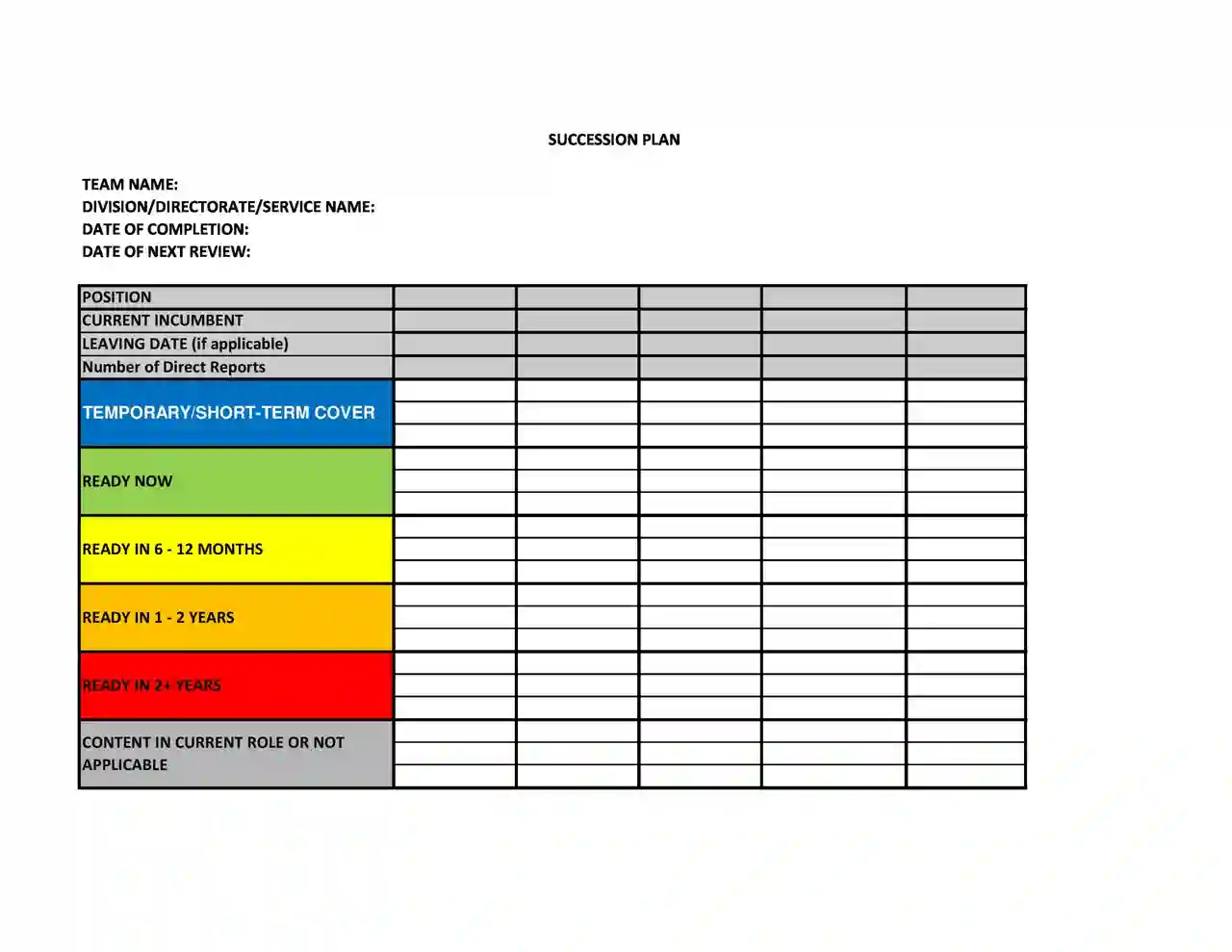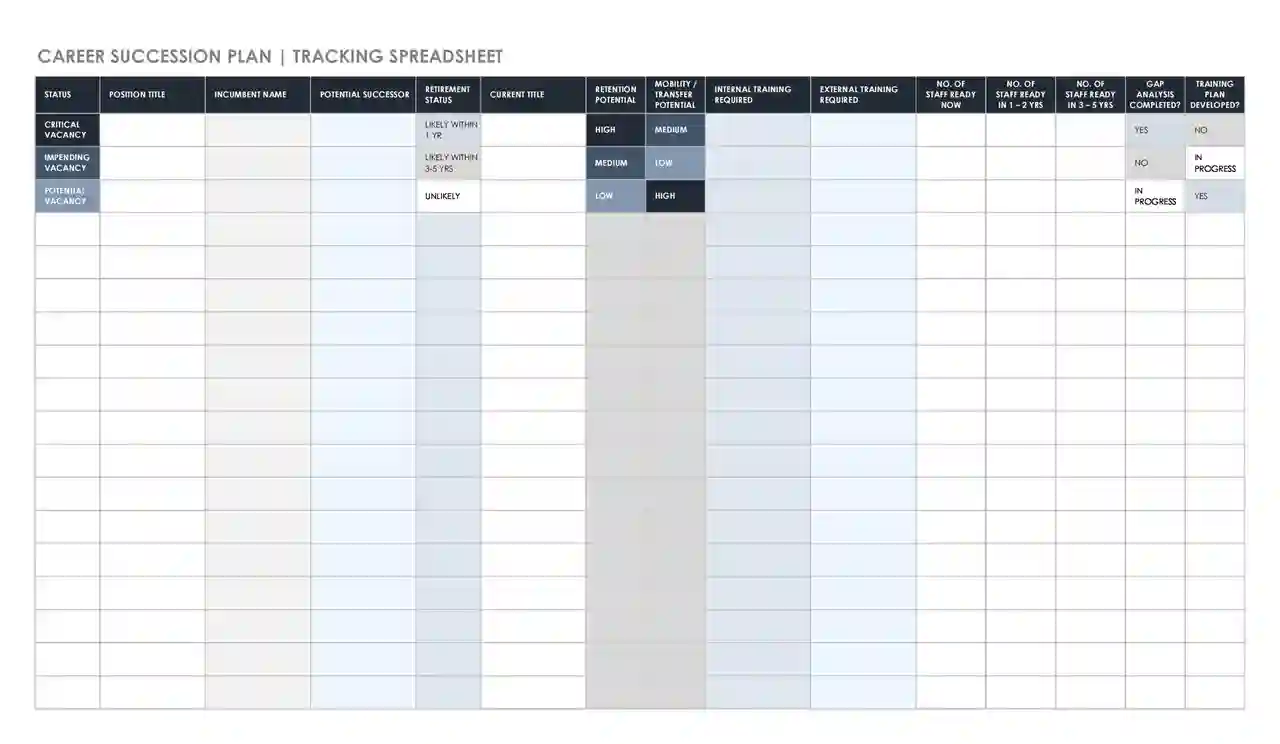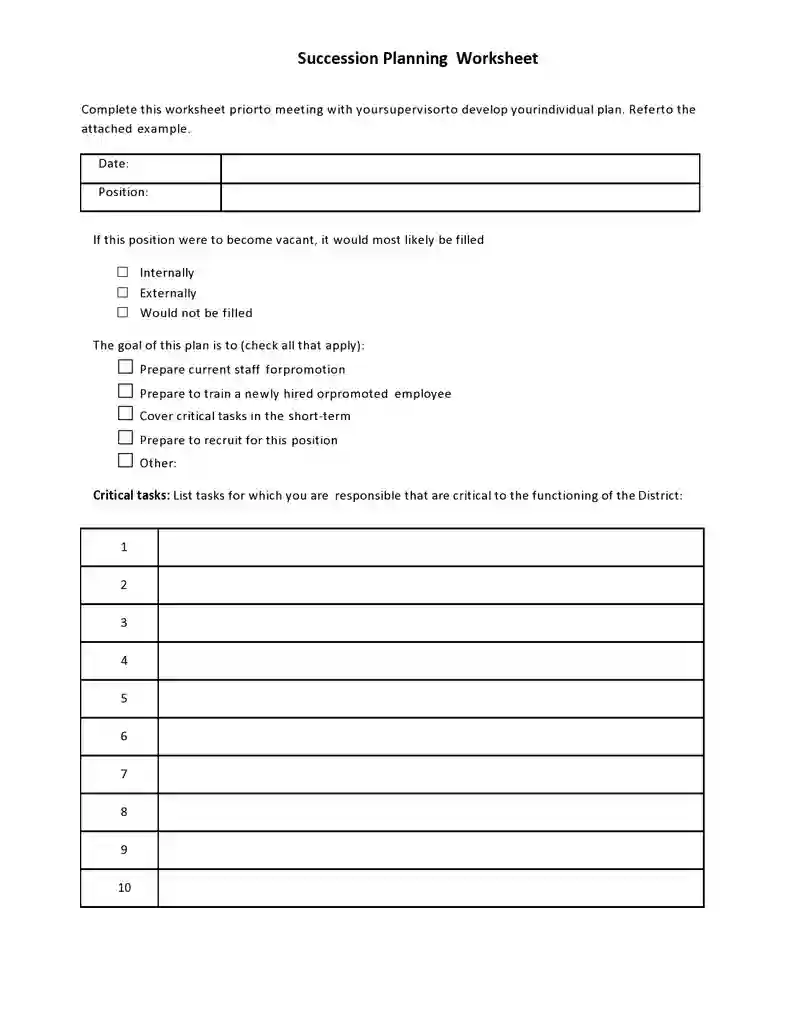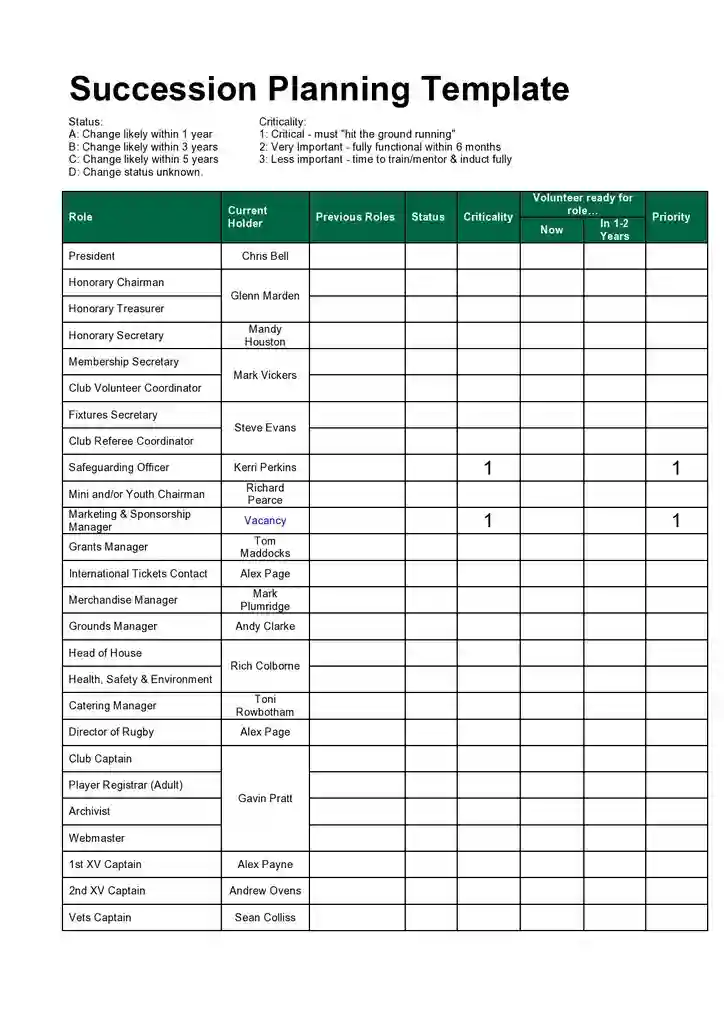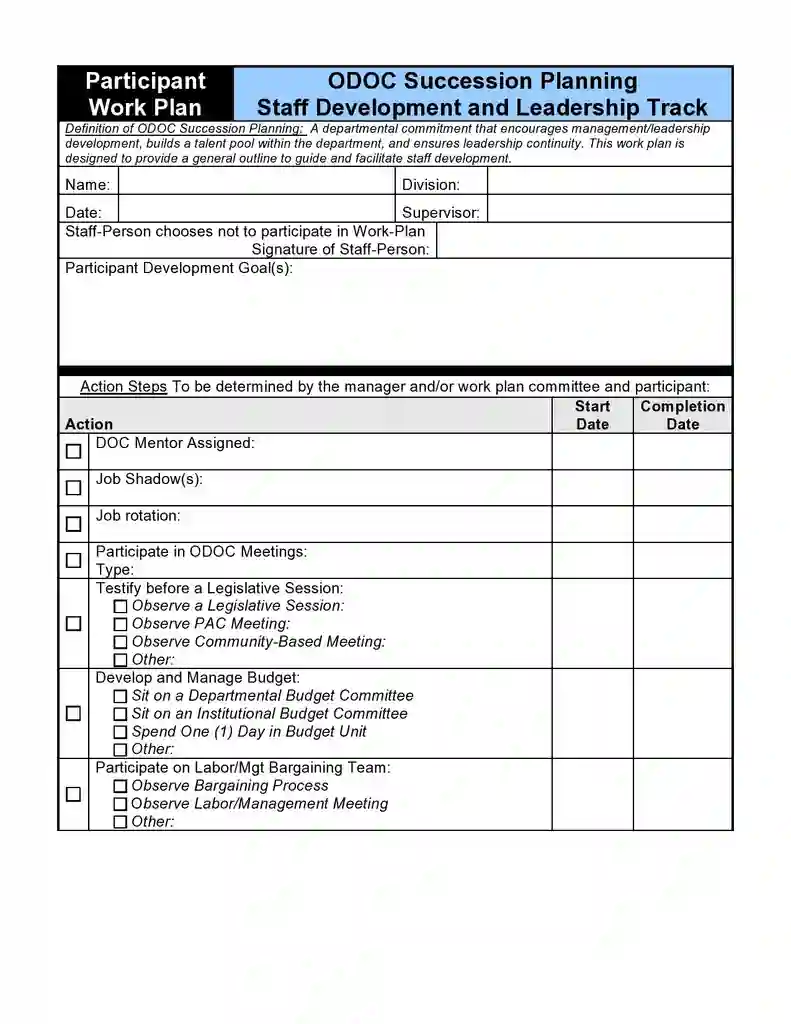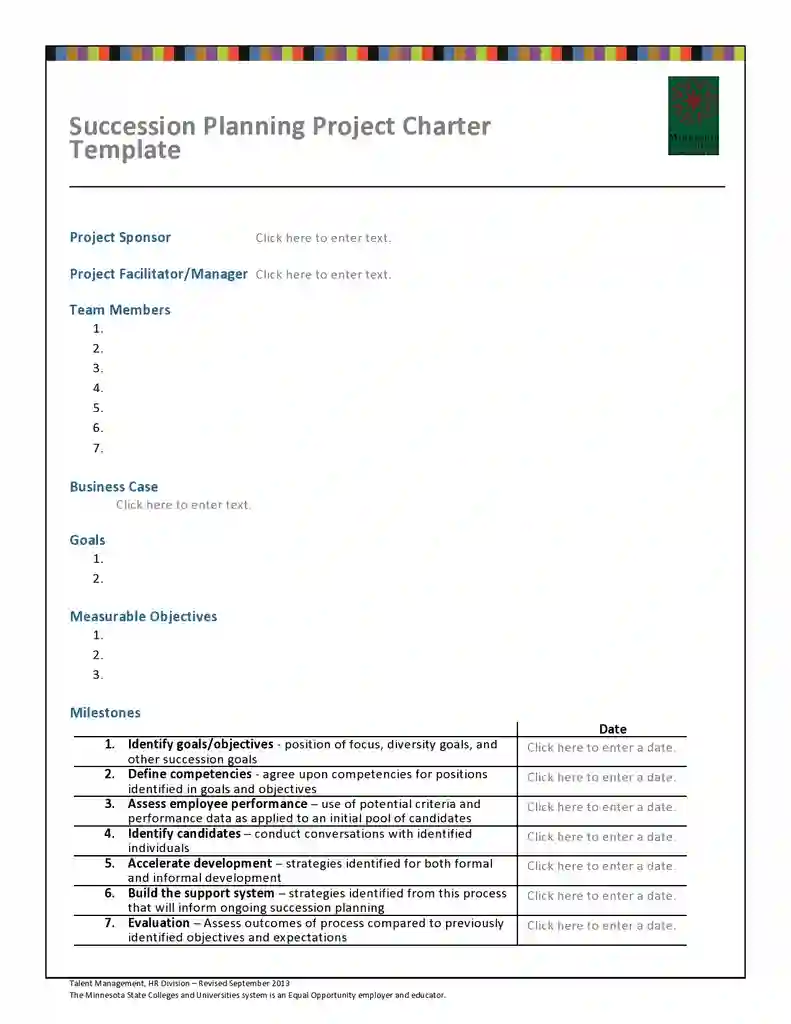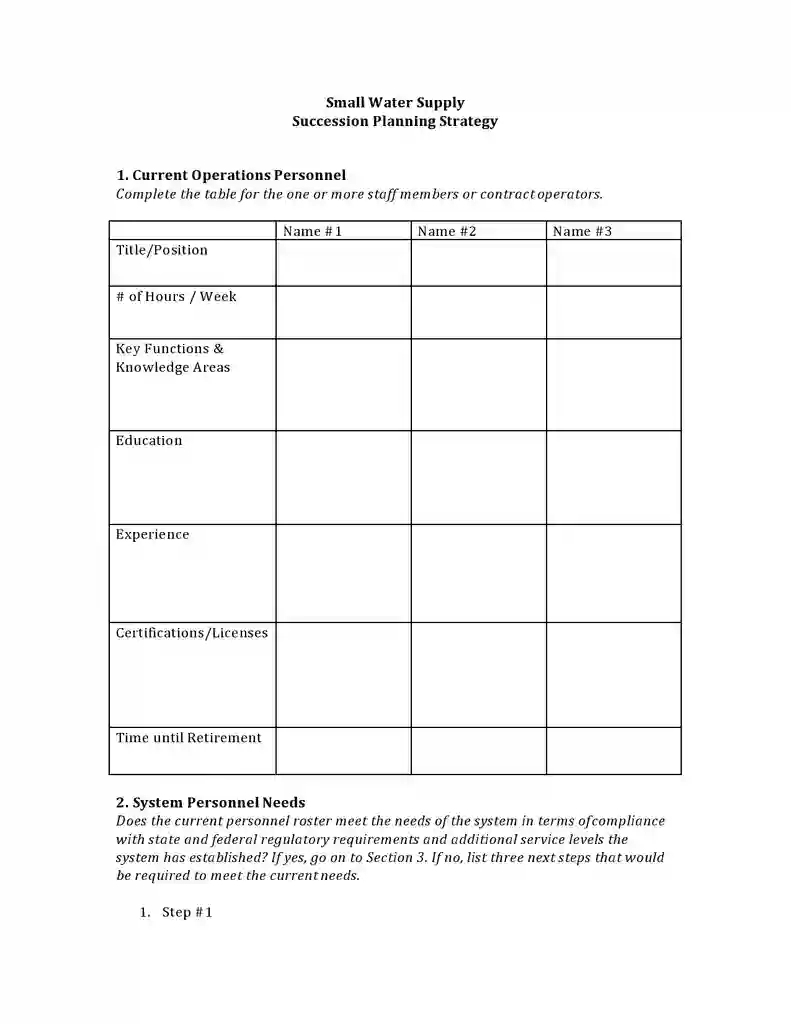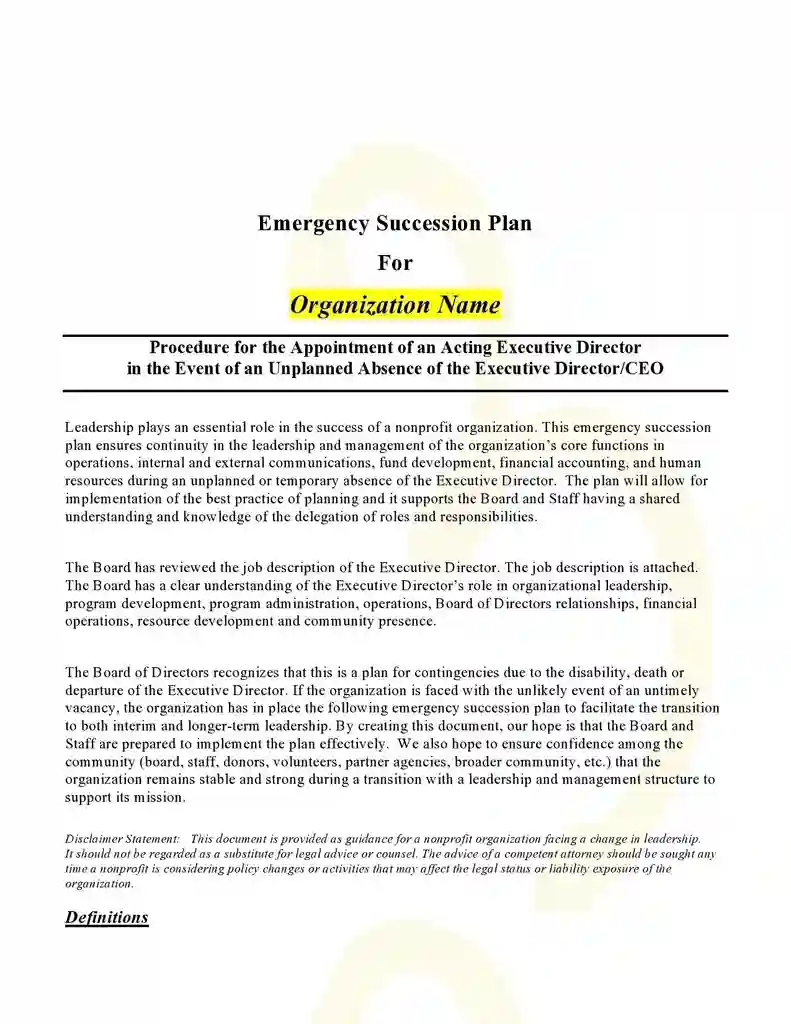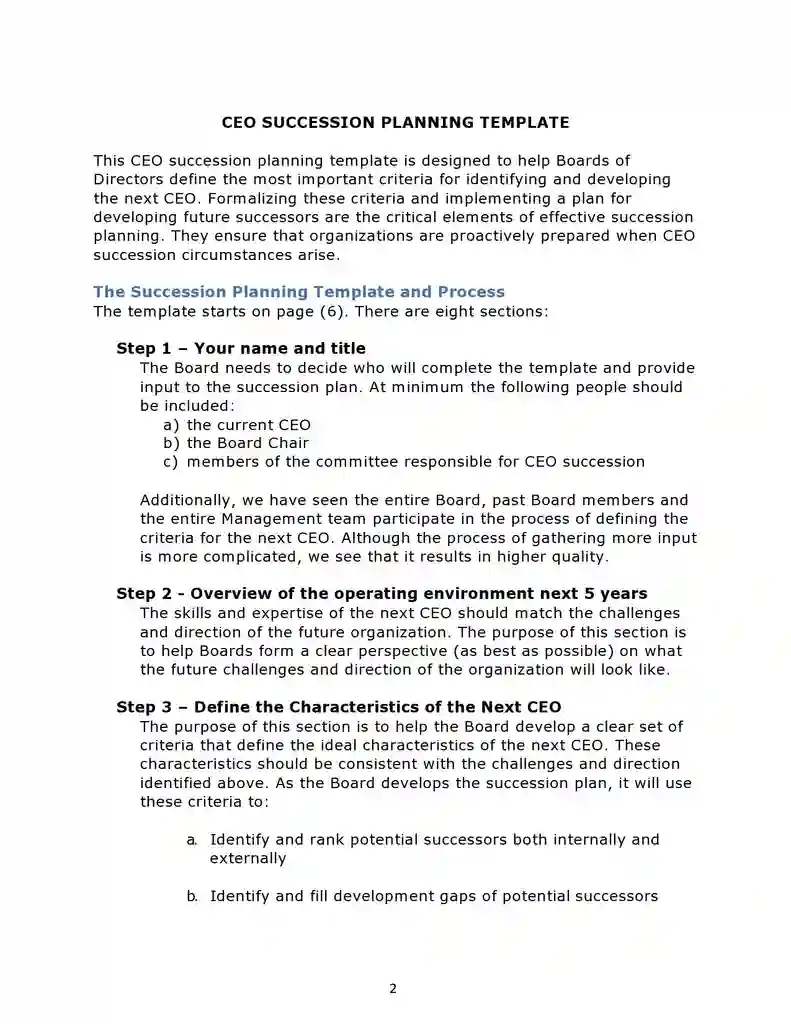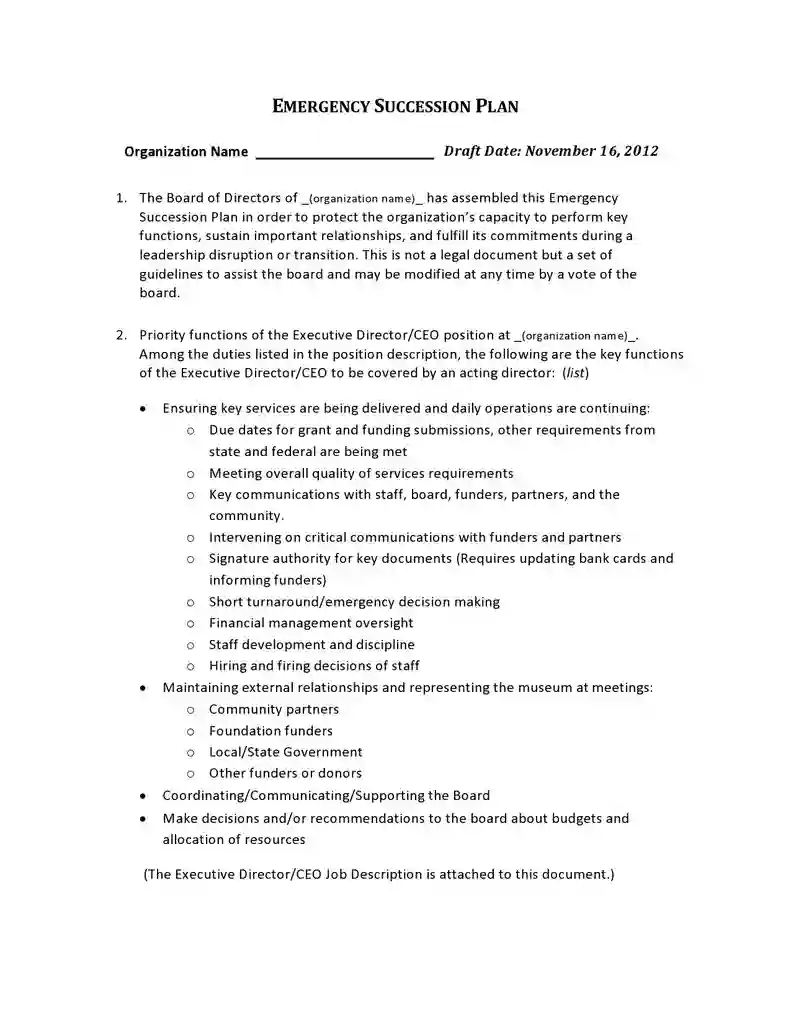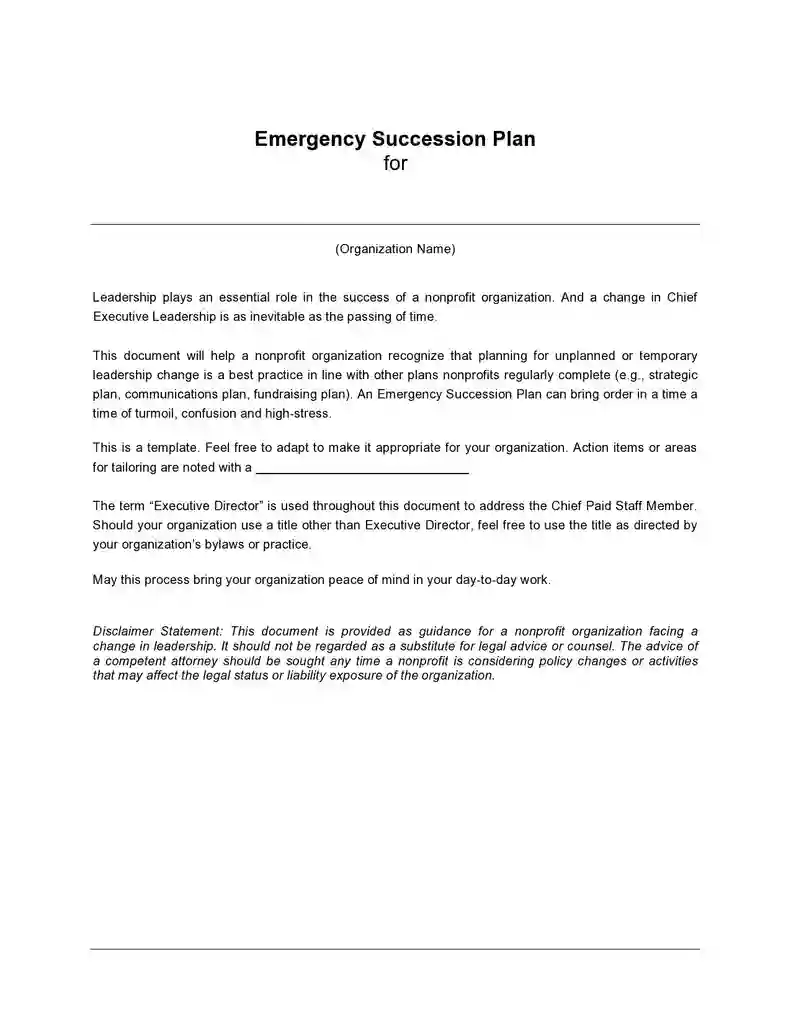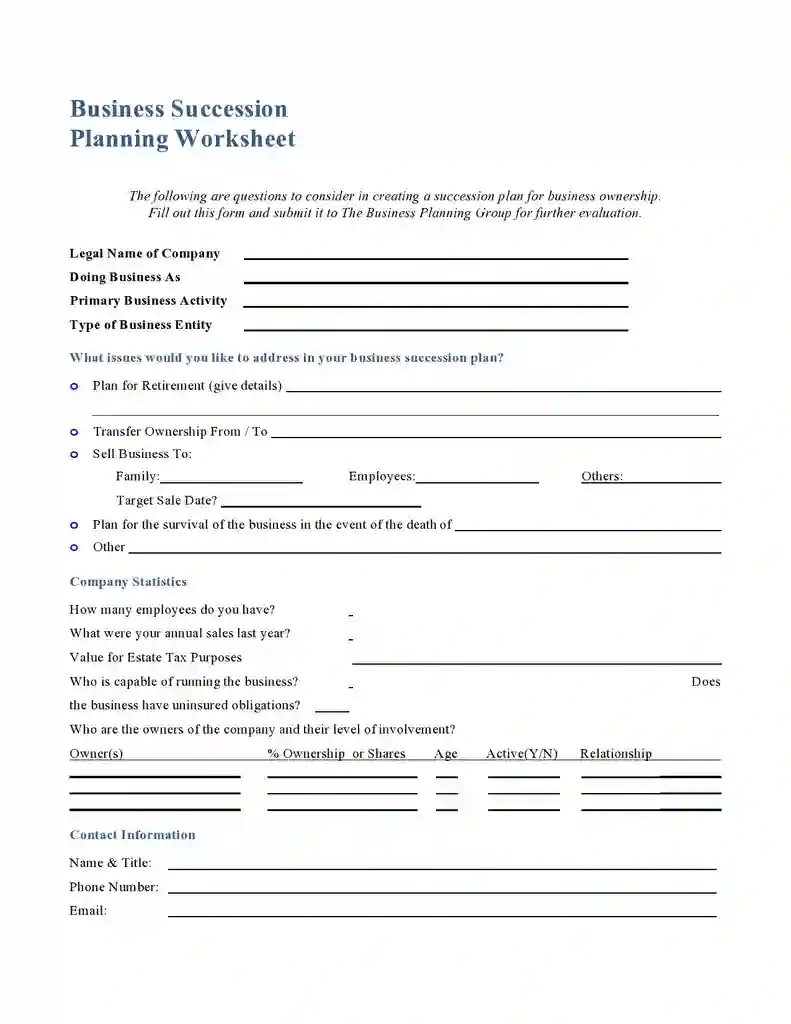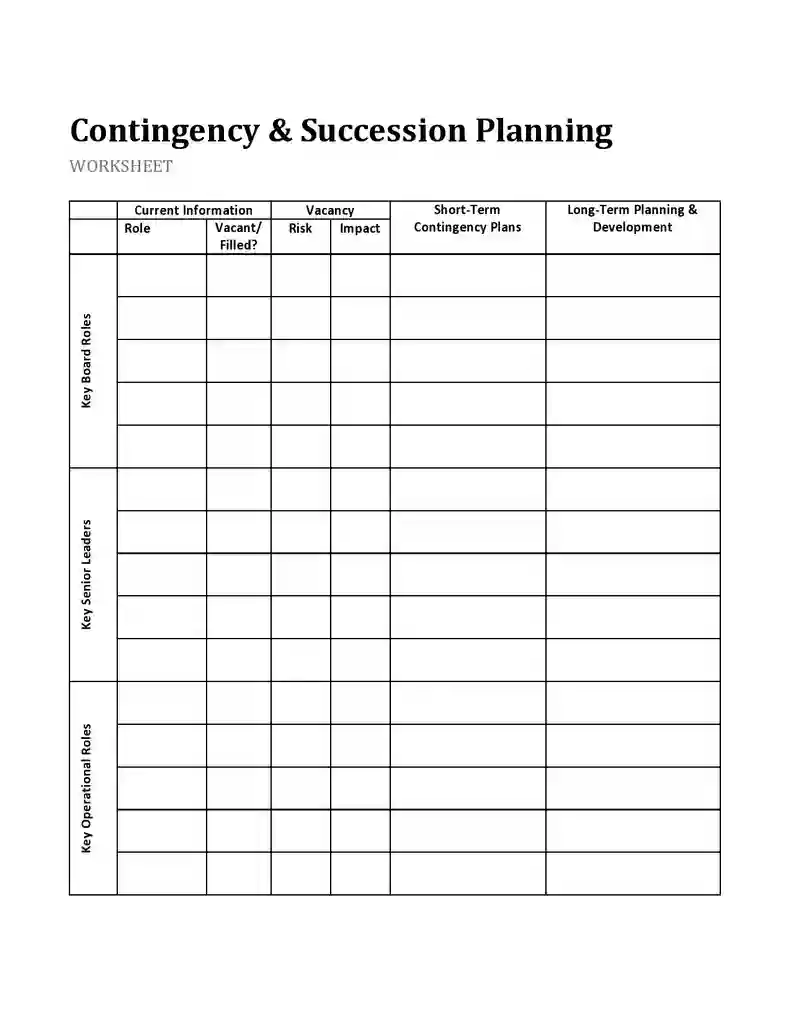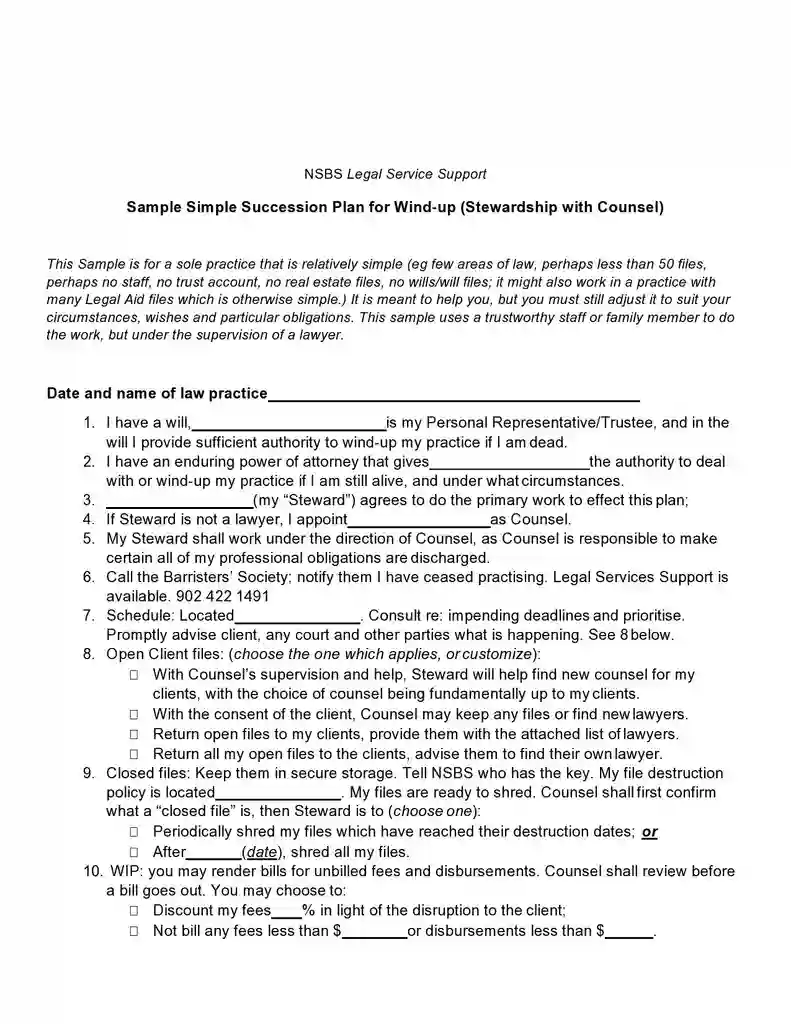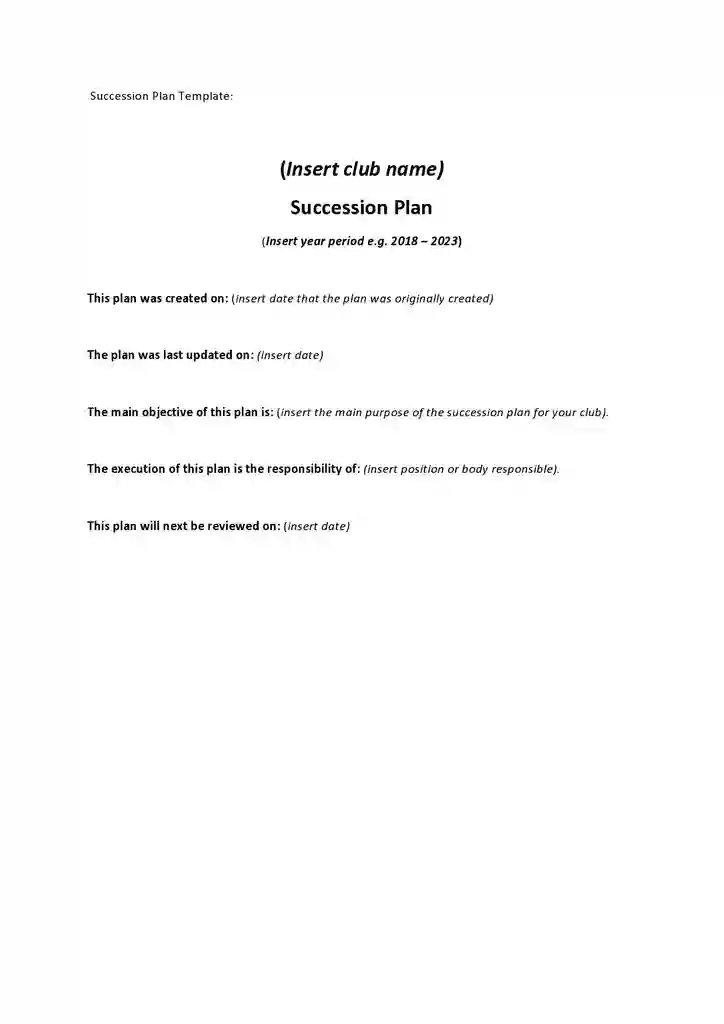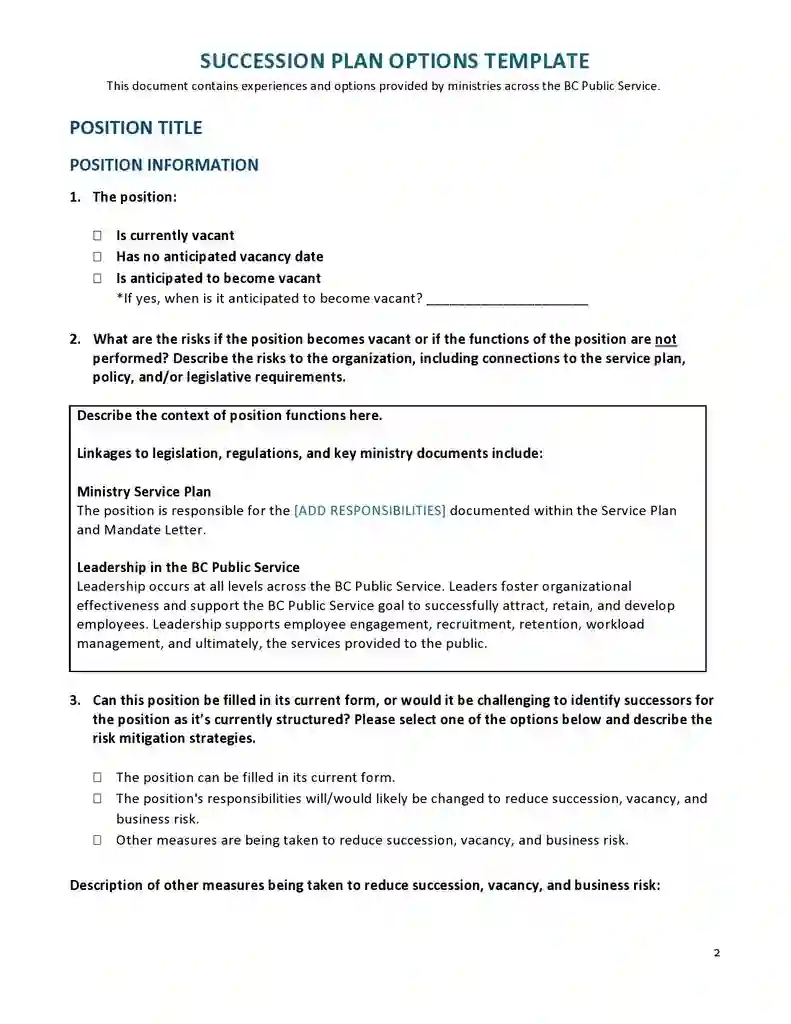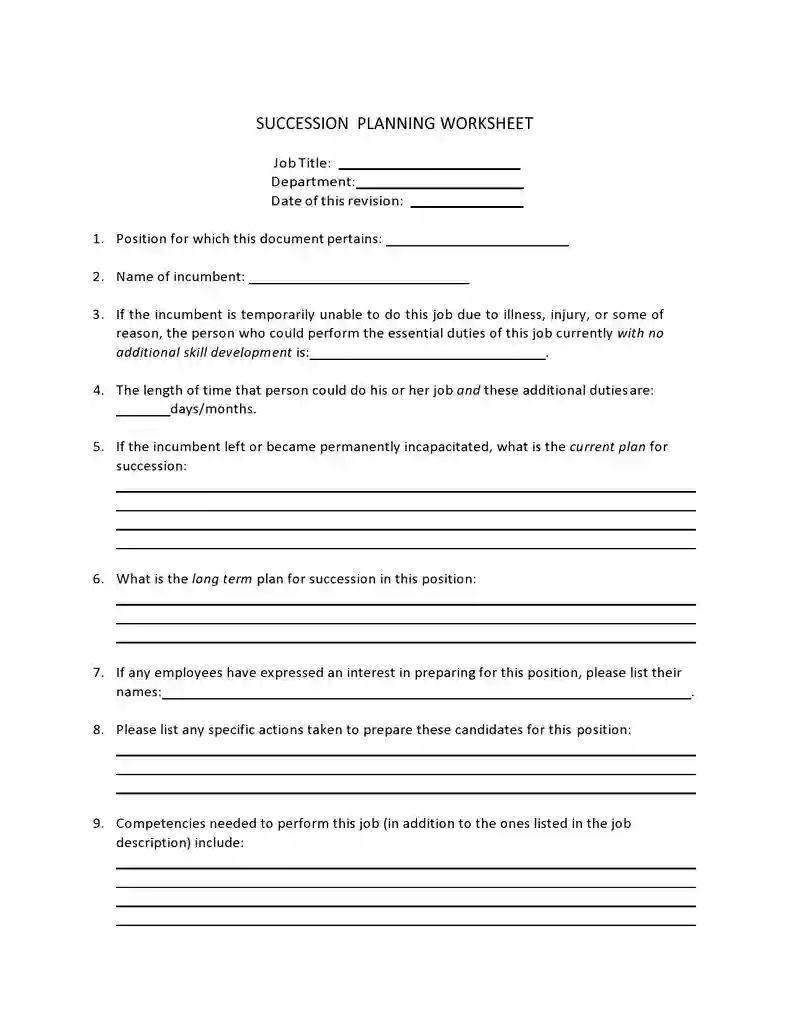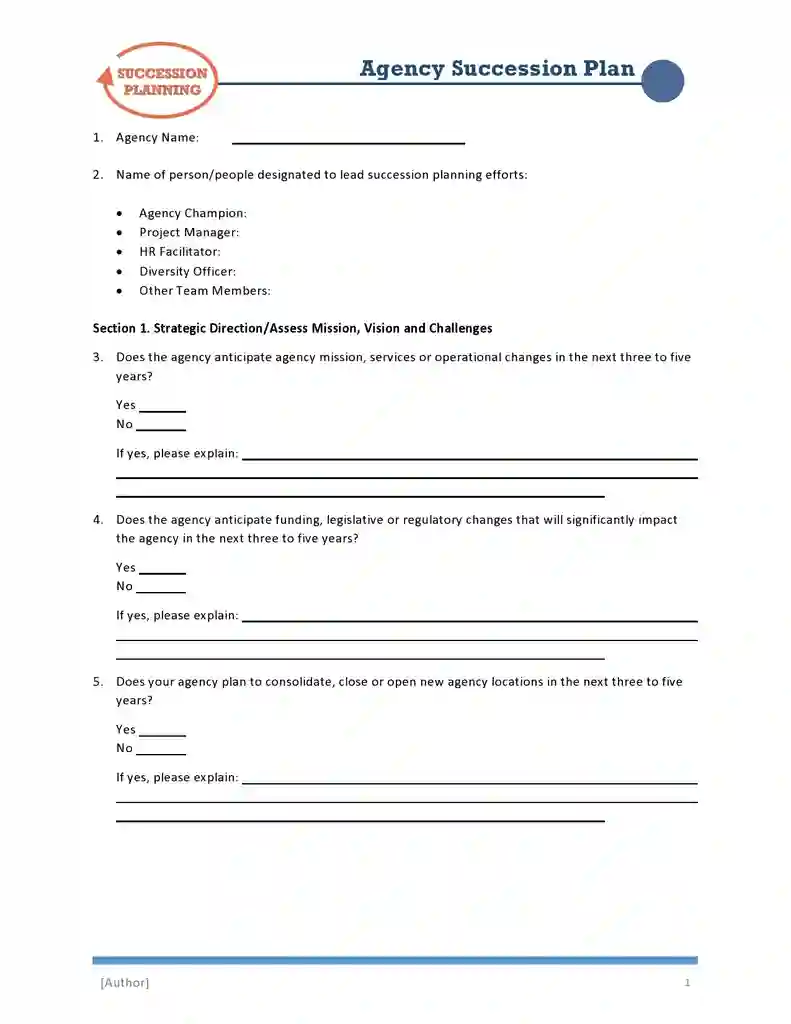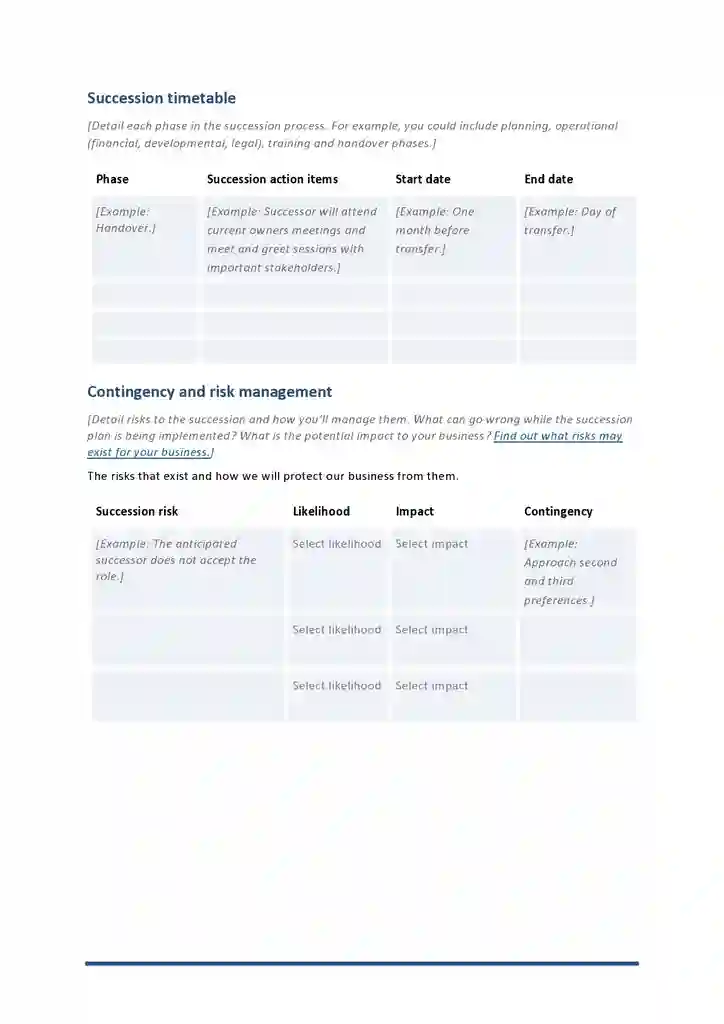40+ Examples of succession planning templates, a guide, and best practices help you build a stronger company! Promote from within, save money, and boost morale
Imagine your top salesperson leaves without notice. Clients are neglected, revenue drops, and you’re scrambling. Succession planning prevents this chaos. It’s your roadmap for smooth transitions, providing your company thrives no matter who leaves. Templates make it easy!
What is a Succession Planning Template?
It’s a structured roadmap to help your company identify and train potential replacements for crucial roles. Think of it as a blueprint for ensuring business continuity no matter who leaves.
Types of Succession Planning
Succession plans come in different varieties, depending on your company’s needs. Here are some common types:
Leadership Succession Planning
- This focuses on those top spots: CEO, department heads, the people who steer the ship.
- It’s about developing employees with leadership potential, so they’re ready to take the helm if needed.
Non-Leadership Succession Planning
- Think about “one-of-a-kind” employees. Do you have people with unique skills that are hard to find?
- This plan ensures you won’t be left scrambling if your star engineer or master chef decides to leave.
Emergency Succession Planning
- Life throws curveballs! This plan is for when someone in a crucial role leaves unexpectedly (illness, sudden job offer, etc.)
- It’s about temporary solutions – who can step in short-term to keep the ship afloat while you find a permanent replacement?
Transition Succession Planning
- This ensures a smooth transfer of knowledge when someone retires or moves to a new role.
- Think of it as the outgoing leader “mentoring” their replacement, sharing what they’ve learned.
Extra Things to Think About:
- Is Your Company Big or Small? Small businesses might use a single, broader plan. Large organizations might have separate plans for different departments.
- What’s Your Business? A tech company and a restaurant chain will need different types of skills in their succession plans.
Examples of Succession Planning Templates
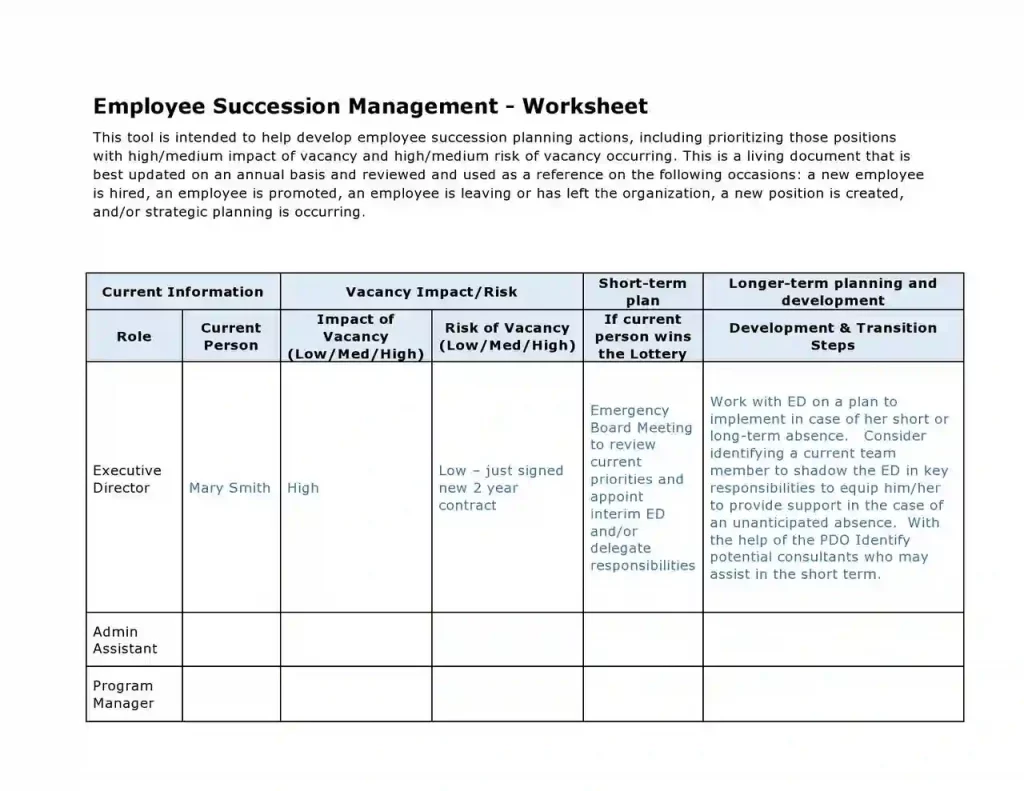
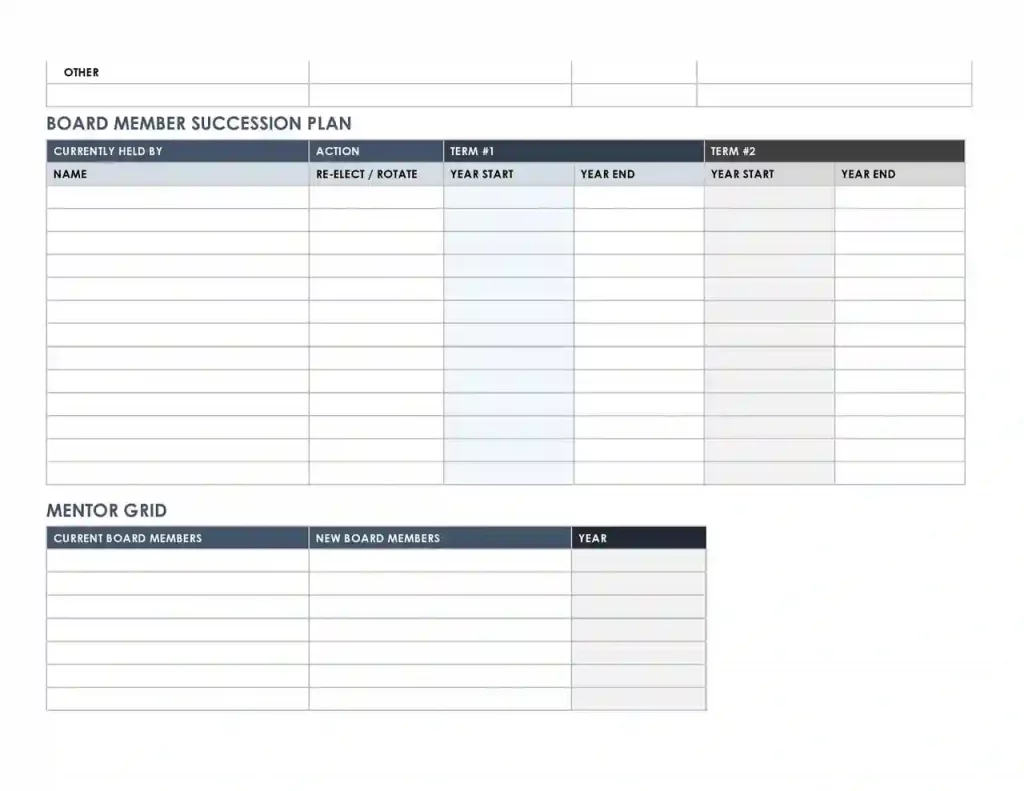
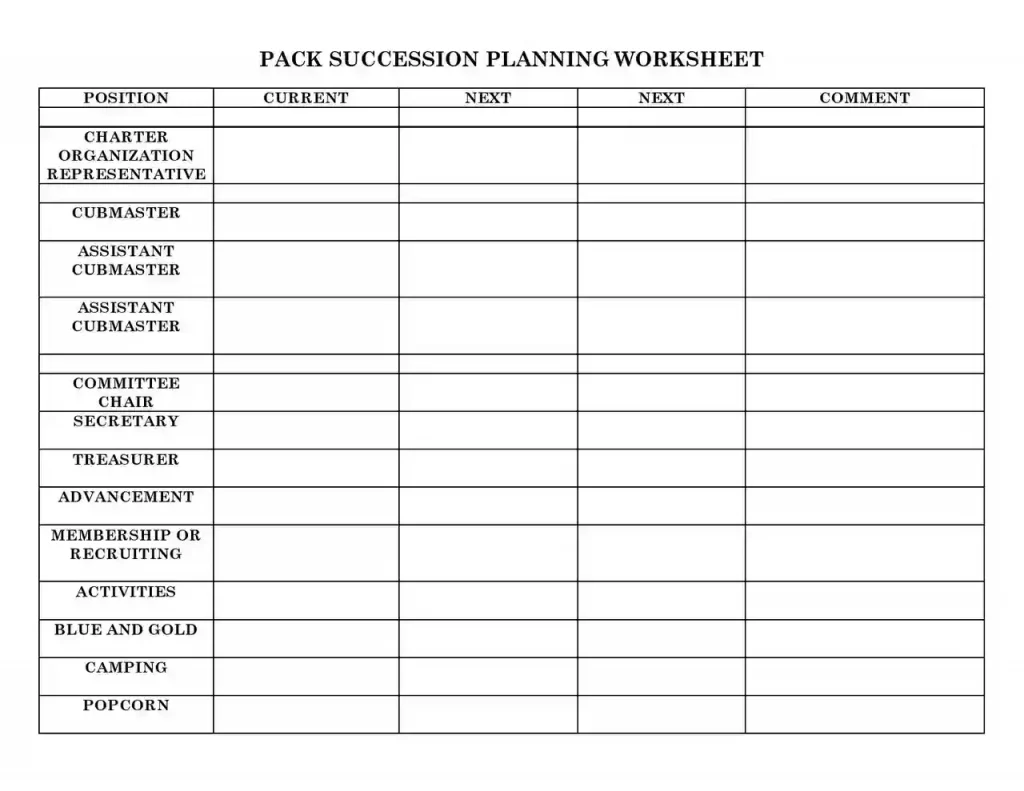
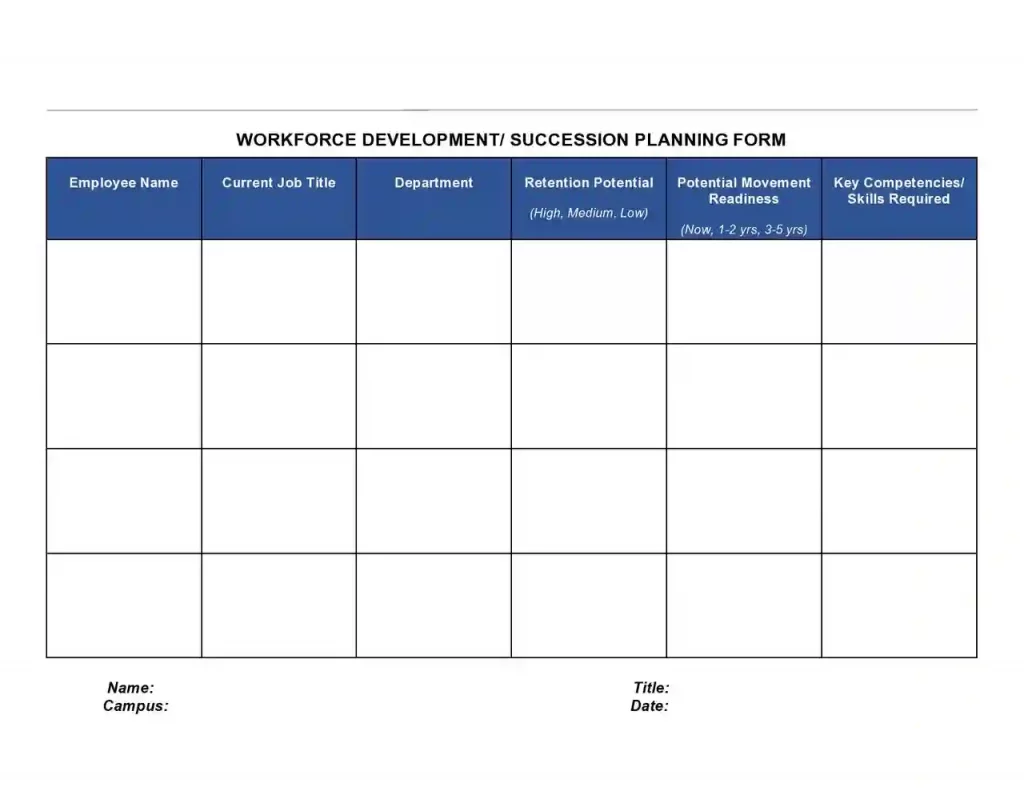
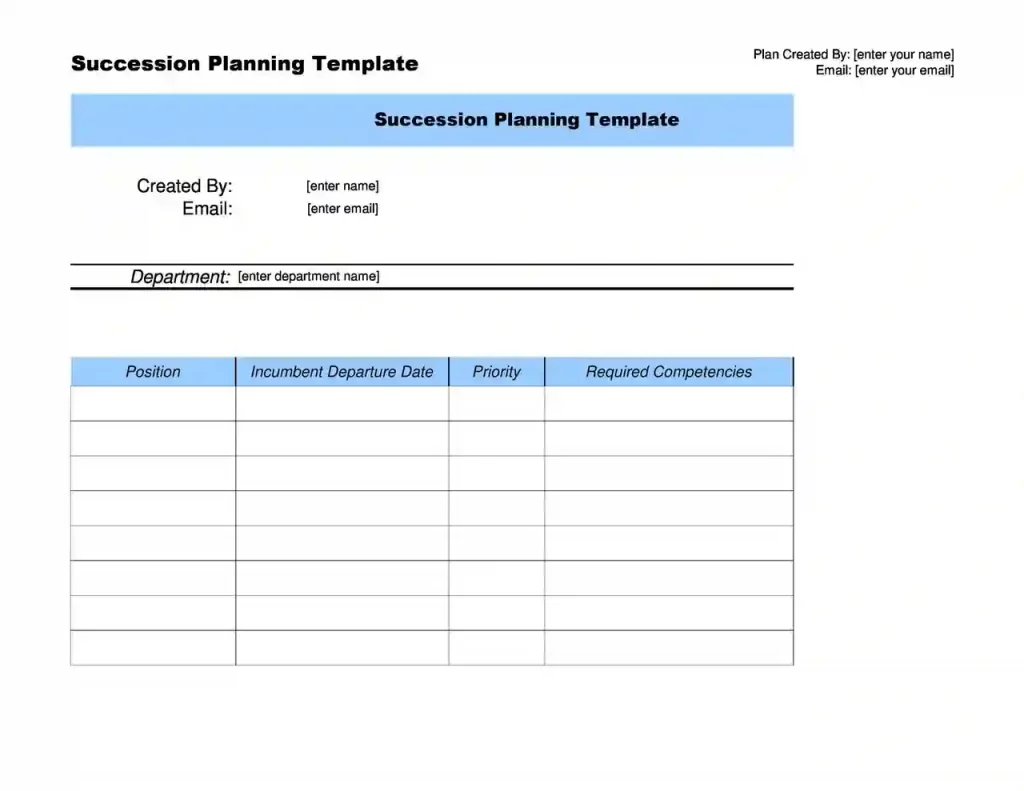
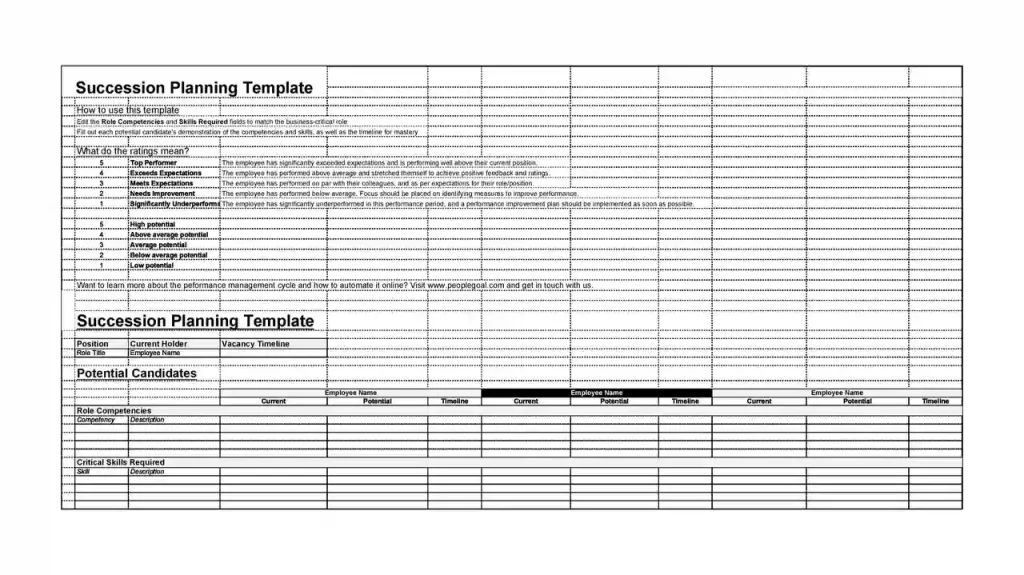
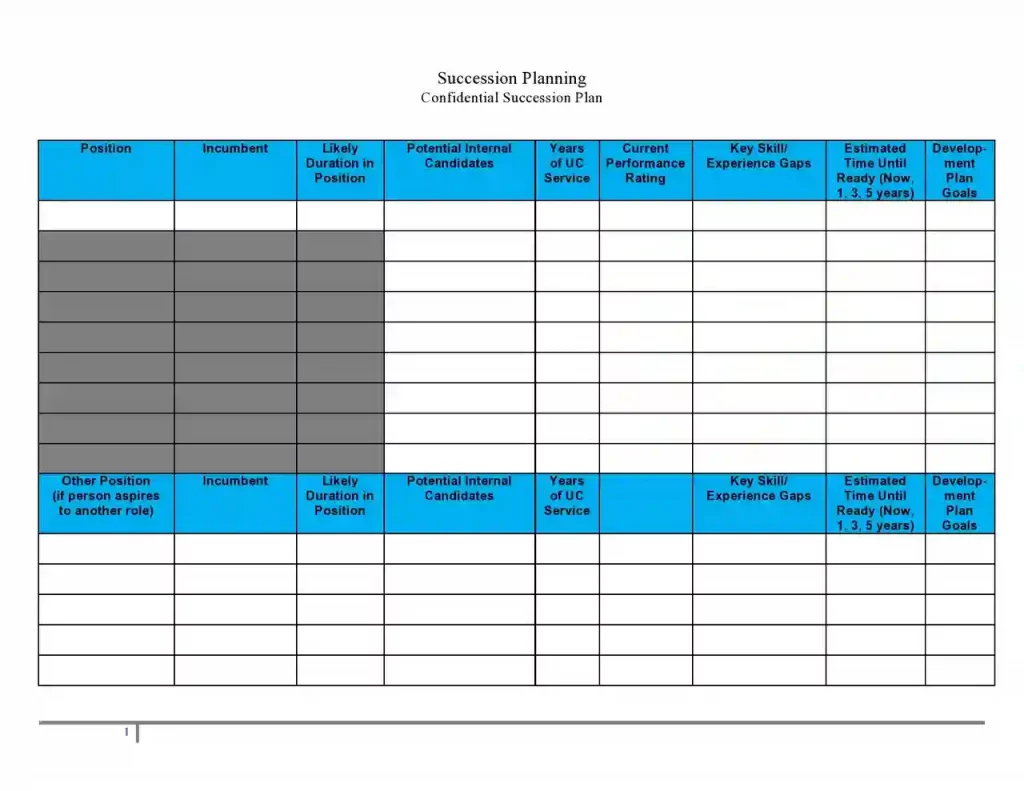
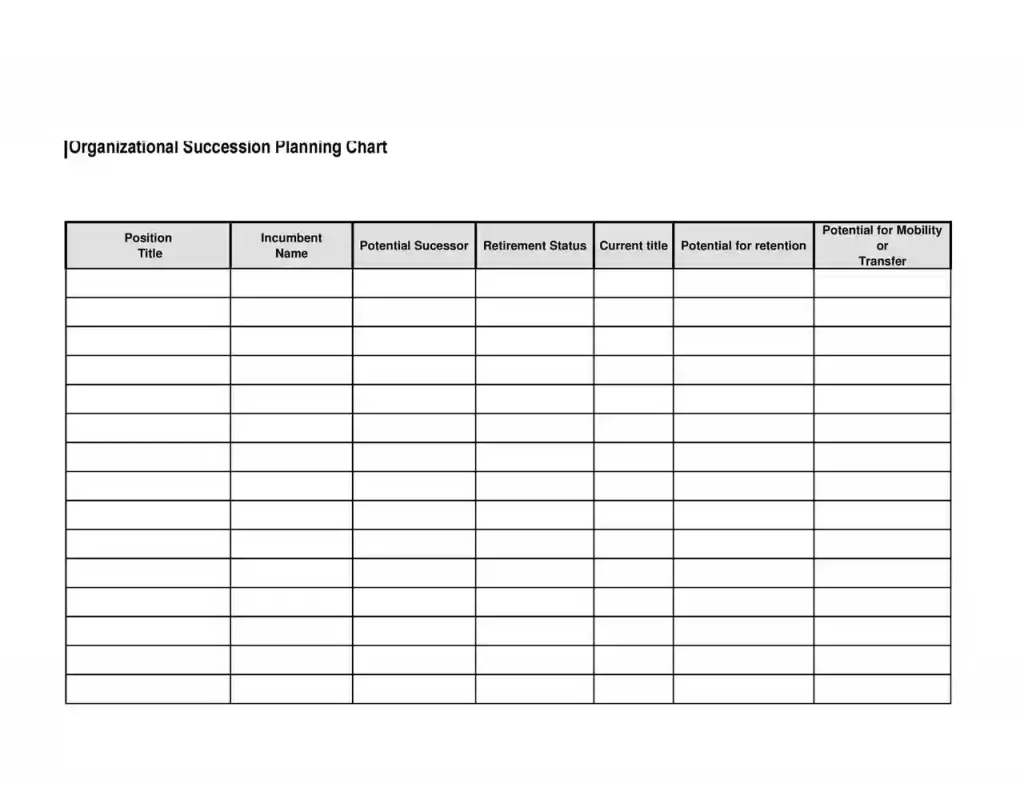
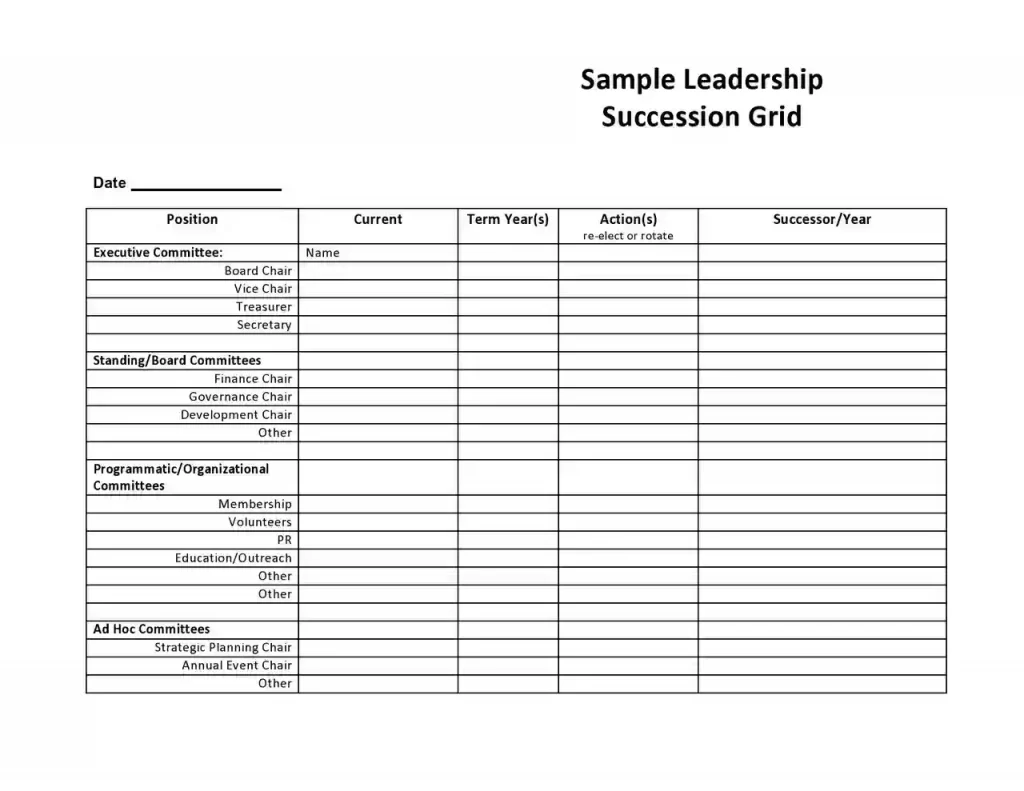
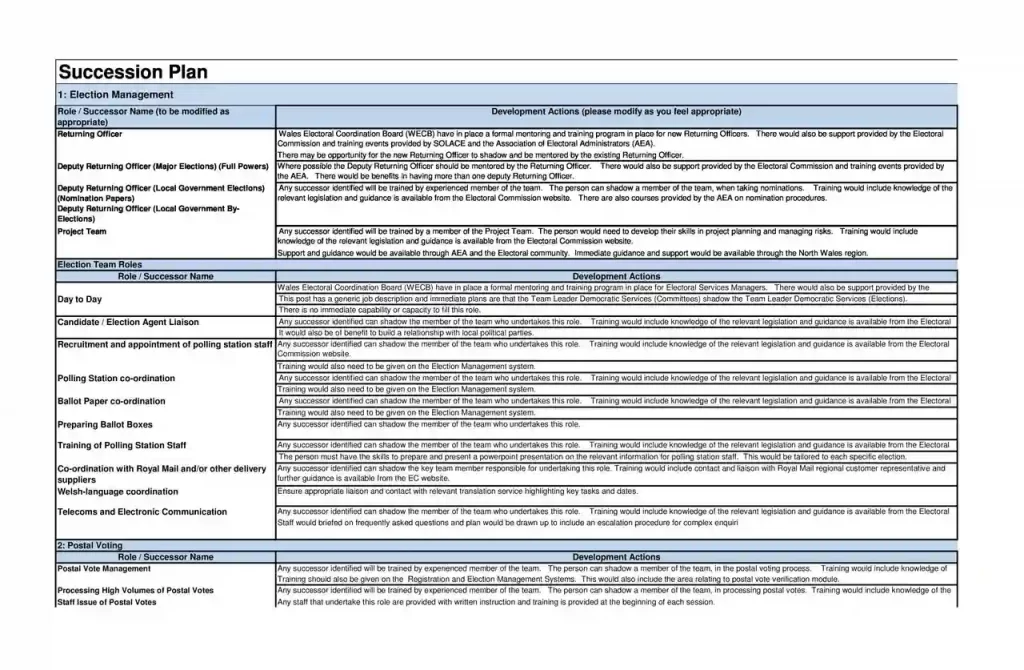
Components of a Succession Planning Template
Here are common elements you’ll find in most comprehensive plans:
- Important Jobs: Which jobs would seriously hurt your company if suddenly empty? Think about positions that are directly tied to making money, keeping things safe, or leading others.
- Potential Successors: Look within your company! Who has the talent or the drive to learn the skills needed for those important jobs? Don’t just list names; note their current strengths and any areas where they’ll need to improve.
- Skills Gap Analysis: Be honest about where your potential successors fall short. Do they need additional training, a mentor, or experience in a different department?
- Individual Training Plans: Outline specific steps to get your potential stars ready. This could include classes, on-the-job training, or having them shadow the person currently in the role.
- Setting a Timeline: Make an educated guess about when people in those key jobs might retire or leave. Match that with how long it will realistically take to train their replacements to be fully prepared.
- Responsibilities: It’s not enough to just have a plan. Someone needs to own each piece! Decide if it’s HR, individual managers, or a small committee who will make sure everything happens on schedule.
Why Use Succession Planning Templates (The Benefits)
Here’s why they’re so important:
- Smooth Sailing: Templates provide a clear roadmap. Instead of scrambling when someone leaves, you have a step-by-step plan ready to go.
- Risk Reduction 101: Avoid making rushed, desperate hiring decisions that could hurt you in the long run. A template ensures critical jobs are filled by the right people, not just the first available ones.
- Grow Your Own Talent: Templates help you identify rising stars within your company. Start developing them early-on, so they’re ready to step up when needed.
- Smart Money Moves: Hiring from outside is expensive! Templates help you save money by promoting from within, plus reducing the time a position is empty.
- Be Prepared, Not Surprised: Things change! People retire, get promotions, or suddenly move away. A template helps you anticipate these changes and have a plan in place.
Who should be involved in developing and implementing a succession plan?
Think of building a successful succession plan like assembling a sports team. You need the right players in the right positions:
HR Professionals: The Team Captains
- They know the rules: HR understands the laws, processes, and best ways to develop people.
- They track the stats: HR knows what skills are needed in the company and can track development progress.
Senior Leadership: The Coaches
- They see the big picture: Leaders know the company’s goals and where things are headed in the future.
- They spot hidden talent: They’ve worked with people for a long time and might see potential that others miss.
Line Managers: The Assistant Coaches
- They know the players: Line managers work closely with employees and see their strengths and weaknesses on a daily basis.
- They provide support: Managers can mentor potential successors and give them opportunities to grow their skills.
How to Create Your Own Succession Planning Template
Don’t worry, you don’t have to be an HR expert to build a great template! Here’s a simple guide:
Step 1: The Must-Haves
- Brainstorm: Start by listing every position in your company.
- Think Big Picture: Which jobs, if suddenly empty, would seriously impact your ability to make money, serve customers, or keep things running? Those are your VIP roles.
- Be Realistic: Focus on the truly essential positions, not every single job title.
Step 2: Find Your Future Leaders
- Look Around: Don’t just focus on top performers in their current jobs. Who has the drive, the talent, and the interest to learn new things?
- Potential vs. Ready-Now: Create two lists – those who could fill a VIP role soon, and those who need more development.
- Note the Gaps: Be honest about where your potential successors might need extra training or experience.
Step 3: Build the Training Plan
- Get Specific: Don’t just say “training needed.” List the exact skills each person needs to learn.
- Variety is Key: Think beyond formal classes. Include options like:
- Mentoring: Pairing them with an experienced employee.
- Job Shadowing: Letting them observe the person in the VIP role.
- Special Projects: Giving them hands-on experience in a new area.
Pro Tips: Taking Your Template to the Next Level
Change is Good (For Your Template!): Businesses evolve – new jobs are created, people get promoted, strategies shift. Review and update your plan at least once a year to keep it up-to-date.
Two (Or More!) Heads are Better Than One: Don’t build your plan alone. Get feedback from:
- Department heads: They know their people and their future needs best.
- HR Professionals: They have expertise in training and development.
Share the Plan (Carefully): Don’t keep your succession plan hidden. Key points to communicate openly:
- Boost Morale: Let employees know you’re invested in their growth.
- Fairness: Show people how decisions about promotions are made.
- Confidentiality: Be clear that individual development plans are private.
Business Succession Plan Templates
How to Identify and Nurture Your Future Leaders
Think of high-potential employees as the future stars of your company. Here’s how to spot them and help them shine even brighter:
Identifying High-Potential Employees (HiPos)
- Go Beyond Job Titles: Look for drive, curiosity, and adaptability.. Look for people with drive, curiosity, and the ability to learn new things.
- The Future, Not Just Now: A HiPo might not be the absolute best at their job today, but you see they have the potential to grow into a leadership role.
- Pay Attention: How do they problem-solve? Do they offer ideas? Their behavior tells you as much as their job title.
Nurturing Your Future Stars
Once you spot those HiPos, invest in their growth:
- Tailored Training: What skills do they need to level up? Think specific classes, special projects, or even a mentor to guide them.
- Stretch Goals: Give them challenges slightly outside their comfort zone. This is how they grow!
- Feedback is Key: Be honest with regular feedback, both what they’re doing well and where they can improve.
- Put Them in the Spotlight: If possible, include them in important projects or give them a chance to present their work. This builds confidence and gets them noticed.
Why Bother With HiPos?
- Save Money: It’s cheaper to promote from within than to always hire new people.
- Happier Employees: When people see a path for growth, they’re more likely to stay with your company.
- A Winning Team! Invested employees do their best work, boosting your whole company.
Best Practices for Using Succession Planning Templates
Your template is a tool, and like any tool, it needs some attention to work best. Here’s how:
- Keep it Up-to-Date: Businesses change! Regularly review and update your template to match new roles, new people, and new company goals.
- Teamwork Makes the Dream Work: Include input from managers and HR professionals. They know their teams and your company’s overall needs best.
- Part of the Big Picture: Your succession plan shouldn’t exist on its own. Make sure it aligns with how you train, promote, and manage your employees overall.
- Share the Plan (Carefully): Be open about the goals of your succession plan. Let employees know you’re invested in their future, but keep individual development plans private.
Succession Planning Best Practices
To get the most out of your succession planning, follow these tips:
- Don’t Wait Until It’s Too Late! Start planning for those key positions as soon as possible. You don’t want to be scrambling when someone unexpectedly leaves.
- Everyone Deserves a Chance: Build a diverse pool of potential successors with different backgrounds and skills. This brings fresh ideas and perspectives to your company.
- Change is Good (For Your Plan): Review and update your plan regularly. As your business grows and changes, so should your plan for the future.
- Be Open and Honest: Share the main points of your succession plan with employees. This shows them you’re invested in their growth.
- Track Your Progress: How quickly can you fill important roles? Are promotions happening from within? This data helps you see if your plan is working.
- Plan for the Unexpected: What if someone leaves suddenly? Include emergency steps in your plan to keep things running smoothly.
- Celebrate Wins! When someone from your succession program moves into a leadership role, celebrate their success! This shows everyone the program works.
Free Succession Planning Template
Big or Small: Simple templates are great for smaller companies, complex ones for larger businesses.
What’s Your Biz? Tech companies might need different templates than restaurants.
DIY: Don’t be afraid to change a pre-made template to fit exactly what you need.
Conclusion
Ready to get started? Download our free succession planning template and let us know what you think!
Don’t let leadership changes derail your success. Implement succession planning now for a stronger, more resilient company. Download our free template and get started today!

The content creator team at calipsotree.com is dedicated to making topics accessible to everyone, with over 9 years of experience in writing and breaking down complex concepts into easy-to-understand articles that answer readers’ financial questions.






